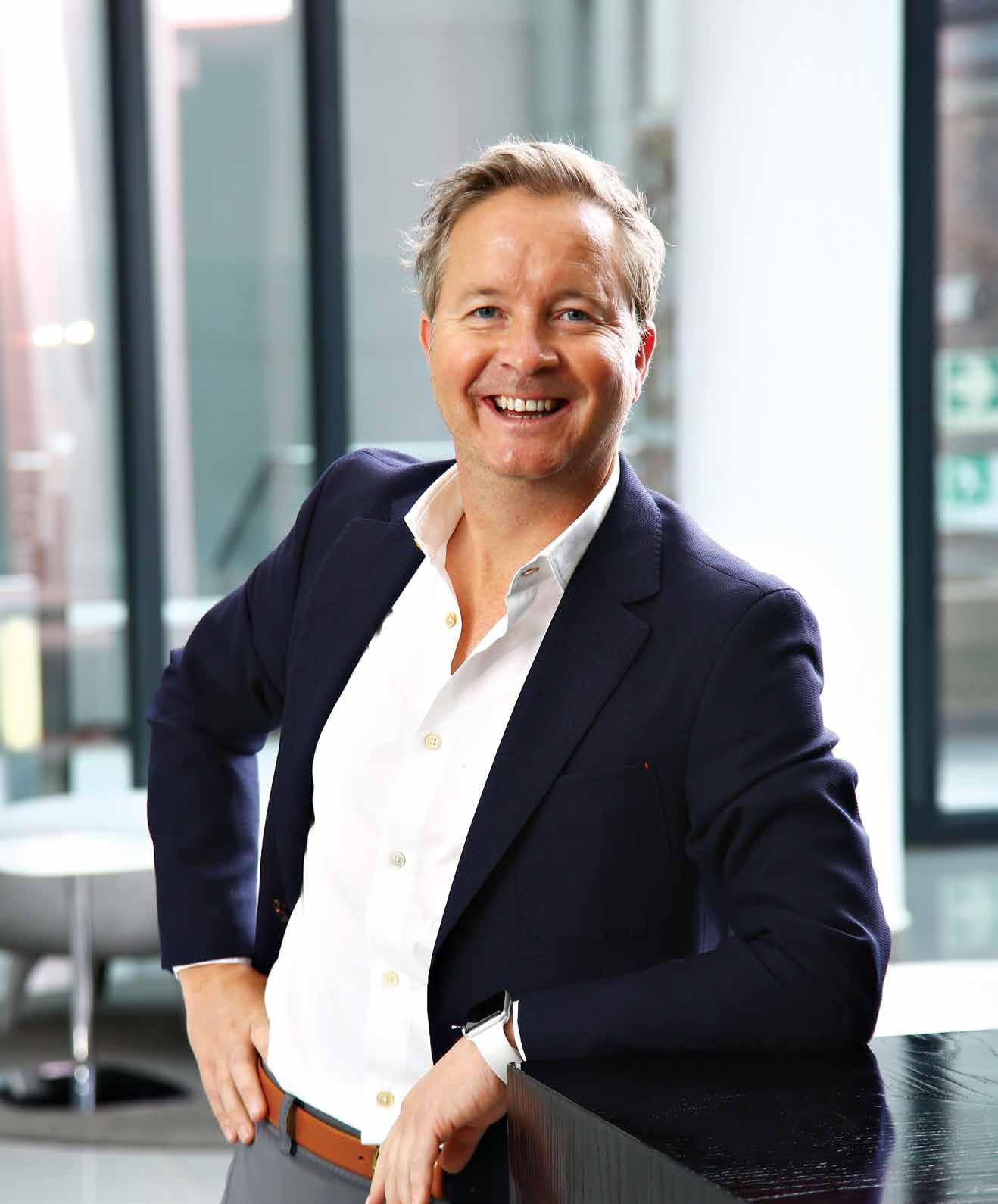








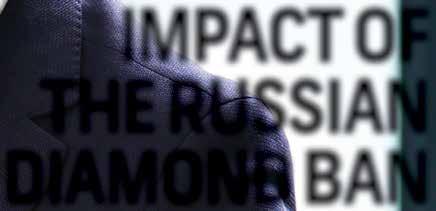
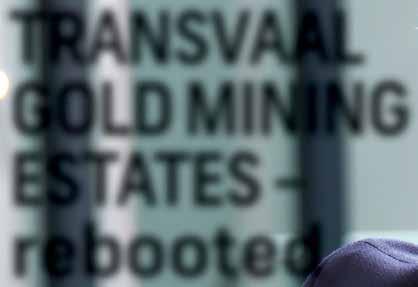







MIN NG READ WHAT REALLY GOES DOWN IN SADC SA www.samining.co.za NOVEMBER / DECEMBER 2022 R39.90 (incl VAT) International R44.50 (excl tax) IMPACT OF THE RUSSIAN DIAMOND BAN TRANSVAAL GOLD MINING ESTATES –rebooted Can SA’s rail transport be fixed? Francisco Baudrand, Enaex Africa’s CEO 30%: diamonds supplied globally by Russia 43: Sabie-Pilgrim’s Rest Goldfield mines ENAEX Exploding into Africa

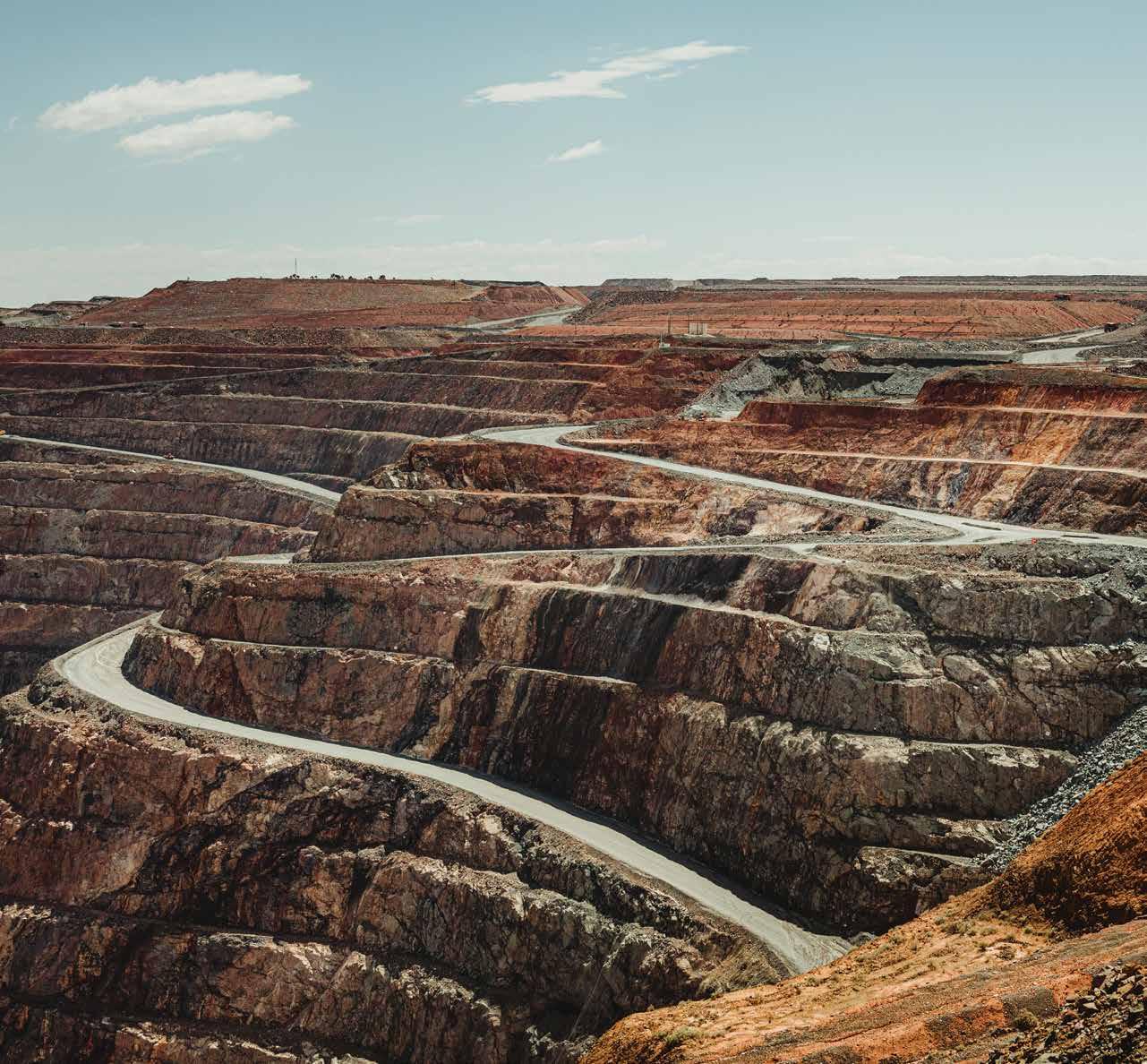
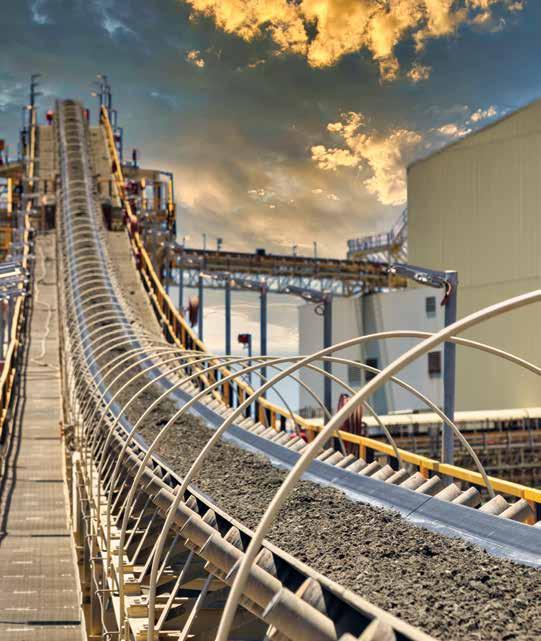
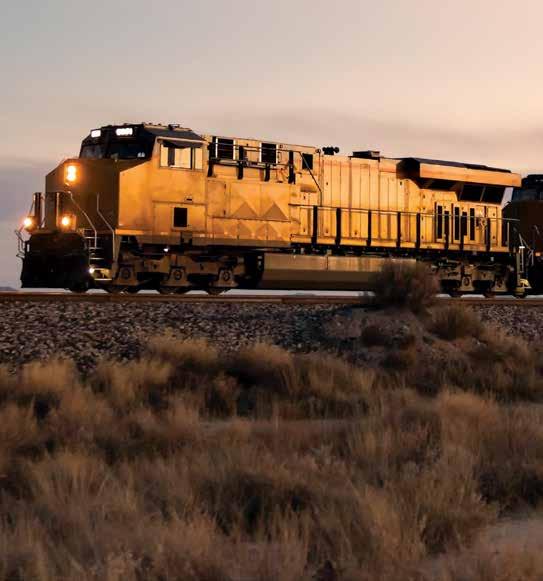
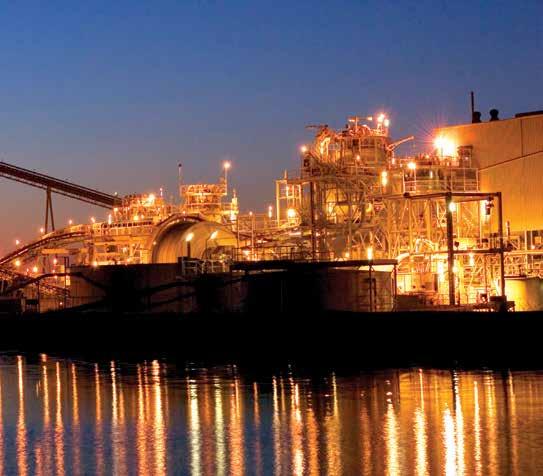








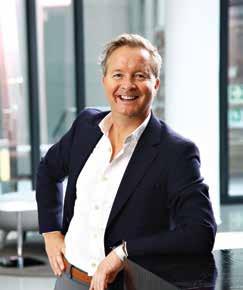




















CONTENTS NOVEMBER / DECEMBER 2022 24 32 18 SA’s zero exposure to global Russian
ban. The hottest African mining projects announced at
Fixing SA’s rail transport. Explosives manufacturer Enaex Africa is taking on the African market with a strategy grounded in safety, quality, people, LED and corporate social responsibility. MIN NG SA www.samining.co.za NOVEMBER / DECEMBER IMPACT OF THE RUSSIAN DIAMOND BAN TRANSVAAL GOLD MINING ESTATES –rebooted Can SA’s rail transport be fixed? Francisco Baudrand, Enaex Africa’s CEO 30%: diamonds supplied globally by Russia 43: Sabie-Pilgrim’s Rest Goldfield mines ENAEX Exploding into Africa COVER STORY: PAGE 8 IN BRIEF 6 Africa Oil Week: We need an Afrocentric energy transition FEATURES 18 Diamonds & Gems Following Russia’s invasion of Ukraine, dozens of countries imposed a ban on Russian diamonds. How has the ban a ected our local market? 22 Consulting Engineering & Project Management What are the consulting engineer’s responsibilities in the planning, construction and oversight of tailings dams? 24 Materials Handling & Logistics With less than 20% of SA’s mineral resources currently travelling by rail, it has become imperative that we rescue our rail infrastructure. 34 Underground Mining Big plans are afoot – thanks to an Australian investor –to remine the historic Sabie-Pilgrim’s Rest Goldfield, a move that will create jobs, upli local communities, and rehabilitate the natural environment. NEWS IN NUMBERS 18 30%: diamonds supplied globally by Russia 34 43: Sabie-Pilgrim’s Rest Goldfield mines REGULARS 4 Out of Africa www.linkedin.com/company/samining/ businessmediamags.co.za/mining/sa-mining/subscribe/ www.samining.co.za or www.businessmediamags.co.za www.facebook.com/businessmediaMAGS/company/samining/ twitter.com/BMMagazines www.instagram.com/business_media_mags/ To visit our website. SCAN HERE
diamond
Mining Indaba.
Following Russia’s invasion of Ukraine earlier this year, many nations around the globe chose to punish Russia by imposing sanctions and embargoes. Among the many products that came under sanction were Russian diamonds, with some 30 countries refusing to purchase them. The question we ask in this issue is whether these sanctions have had any negative or positive impacts on our local diamond industry.
Closer to home, tragedy struck recently in Jagersfontein in the Free State, when a tailings dam collapsed, leading to significant damage to property and loss of life. In light of the many tailings dams still dotted around South Africa, we take a look at the critical role of the consulting engineer in the planning, construction and oversight of tailings dams.
While these projects are situated elsewhere across the continent, South Africa has good news of its own.
Transvaal Gold Mining Estates (TGME) – which encompasses the Sabie-Pilgrim’s Rest Goldfield – has been taken over by Australian firm Theta Gold Mines, with the aim of restarting e orts to mine gold. Thanks to modern technologies and the current gold price, they anticipate making a profit from the 43 mines that compromise TGME, while also creating many jobs and upli ing local communities.
In addition, we look at how the rainy season may impact mine dewatering e orts, and delve into the importance of project management as a career, how and why such skills are necessary, and how digitisation is making it easier to acquire these skills.
www.samining.co.za SA
MIN NG
Rodney Weidemann
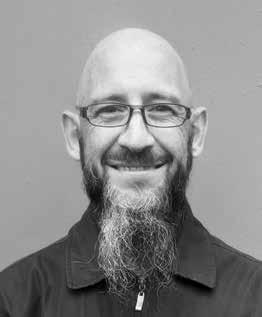
Tel: 062 447 7803 Email: rodneyw@samining.co.za
ONLINE EDITOR
Stacey Visser
Tel: 011 280 3671 Email: vissers@businessmediamags.co.za
ART DIRECTOR
Shailendra Bhagwandin
Tel: 011 280 5946 Email: bhagwandinsh@arena.africa
ADVERTISING CONSULTANTS
Ilonka Moolman
Tel: 011 280 3120
Email: moolmani@samining.co.za Tshepo Monyamane
Tel: 011 280 3110 Email: tshepom@samining.co.za

PRODUCTION CO-ORDINATOR
Neesha Klaaste
Tel: 011 280 5063 Email: neeshak@sahomeowner.co.za
SUB-EDITOR
Although rail remains one of the most e icient ways of transporting bulk goods, less than 20% of the country’s mineral resources are transported this way. The financial impact of this on mining organisations should not be underestimated.
However, while the situation with our rail industry is dire, e orts are being made to reverse the many challenges Transnet faces. This provides hope that we will be able to restore this vital infrastructure in a way that can significantly improve the materials handling and logistics supply chain.
In more positive news for the continent, several major mining projects were announced at the recent Mining Indaba, and were described at the event as being among the “hottest mining projects in Africa”.
© ISTOCK –bashta While the situation with our rail industry is dire, e orts are being made to reverse the many challenges Transnet faces. “ “
Lastly, in our cover story, we look at an explosive new presence on the continent –Enaex Africa. The first Chilean mining company to invest in Africa, it has acquired a controlling interest in Sasol explosives, intending to supply not only South Africa with high-quality explosives, but also use the country as a base from which to enter the rest of Africa.
With its stated goal being to “build a safer future for the African continent regarding explosives and mining”, the fact that Enaex is equally committed to corporate social investment and upli ment means its move into Africa is something we can all get right behind.
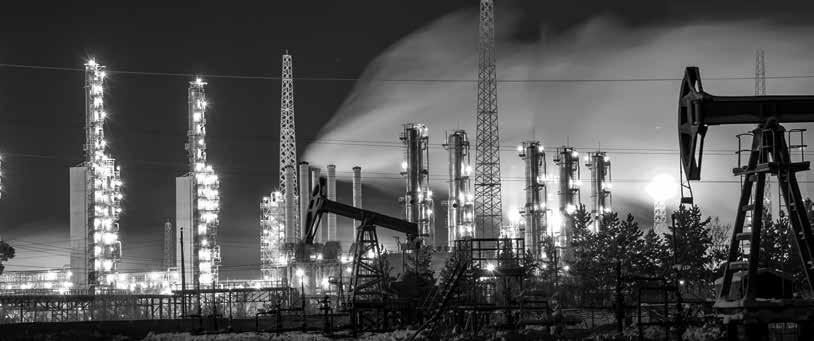
And on that cheerful note, SA Mining would like to wish all its readers a wonderful, peaceful and relaxing Festive Season. ■
Andrea Bryce
BUSINESS MANAGER
Claire Morgan
Tel: 011 280 5783 Email: morganc@sahomeowner.co.za
GENERAL MANAGER MAGAZINES
Jocelyne Bayer
SWITCHBOARD
Tel: 011 280 3000
SUBSCRIPTIONS
PRINTING Hirt & Carter PUBLISHER Arena Holdings (Pty) Ltd, PO Box 1746, Saxonwold, 2132 Copyright Arena Holdings (Pty) Ltd. No part of this publication may be reproduced, stored in a retrieval system or transmitted in any form or by any means, electronic or mechanical, without prior written permission. Arena Holdings (Pty) Ltd is not responsible for the views of its contributors.
www.samining.co.za 2 SA MINING NOVEMBER / DECEMBER 2022 FROM THE EDITOR
SIGNIFICANT INVESTMENTS WILL HELP UPLIFT LOCAL COMMUNITIES READ WHAT REALLY GOES DOWN IN SADC
EDITOR
Neesha Klaaste
Tel: 011 280 5063 Email: neeshak@sahomeowner.co.za
Rodney Weidemann
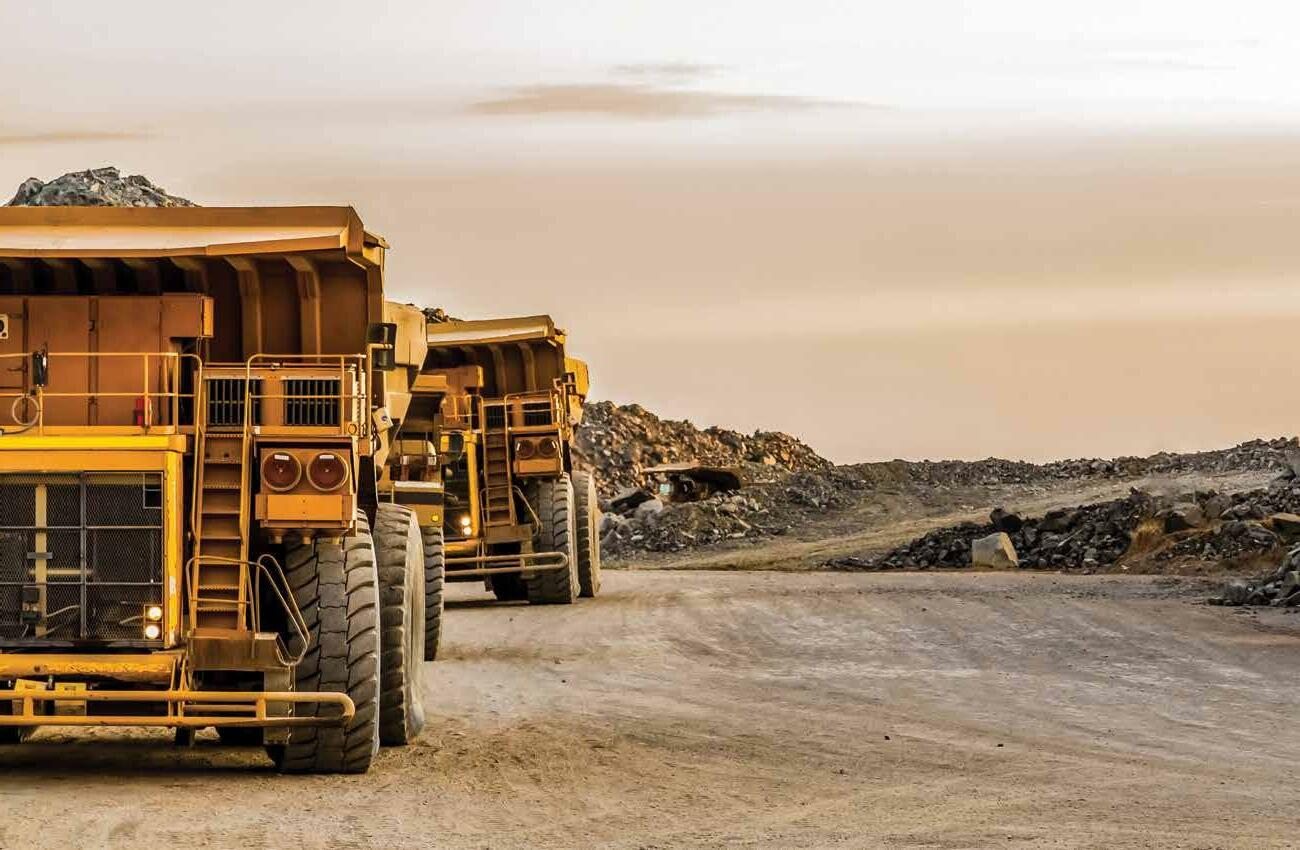
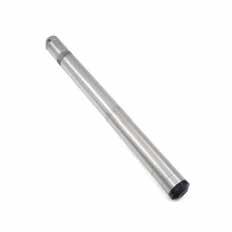
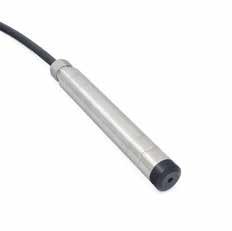
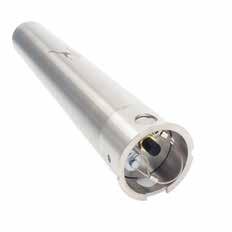







Pressure Ranges 0…5 to 0…100 mH2O Total Error Band ±0,1 %FS @ 0…50 °C Recording Capacity 57‘000 measuring points Dimensions ø 22 mm Special Characteristics Also available in ECO design Pressure Ranges 0…1 to 0…30 bar Total Error Band ±0,2 %FS @ 0…50 °C Accuracy ±0,05 %FS Interfaces RS485, 4…20 mA Special Characteristics ø 16 mm Communication Mode 2G / 3G / 4G / LoRa NB-IoT LTE 2M Sensor Interfaces RS485, SDI-12, analog, digital Battery Life Up to 10 years Monitoring Mine Dewatering keller-pressure.co.za DCX-22 Level Datalogger 36XS Level Sensor ARC1 Modem Datalogger
HITACHI ENERGY SECURES POWER SUPPLY TO GHANA’S KOLWEZI MINING REGION

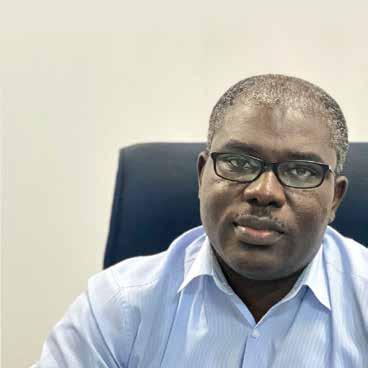

WEG’S WITHDRAWAL BOARDS BOOST UPTIME AT GHANA GOLD PLANT
A process plant at a gold mine in Ghana has become the first in Africa to install WEG’s fully withdrawable WEG CCM06 boards, which safely improve the plant’s flexibility when isolating selected circuits for maintenance and repair.
“The customer’s existing motor control centre (MCC) regulated many operations, which all had to be shut down when attending to a single item of equipment,” says Foster Yeboah, regional sales manager for West Africa based at Zest WEG’s Ghana branch. “This led to significant downtime, which the customer wanted to avoid.”
The mine required a solution that would allow the plant to isolate the electrical feed to specific equipment, allowing targeted maintenance to be conducted on those items without necessitating a complete plant shutdown, says Yeboah. The answer came in the form of a double containerised electrical house, or E-house, with a key element of this solution being the fully withdrawable boards.

“The WEG CCM06 boards are compartmentalised functional units which can be turned o and pulled out, without a ecting the power to the other units,” he explains. “This is a valuable feature when considering that important equipment such as mills and discharge pumps must ideally operate continuously to keep the plant e icient.”


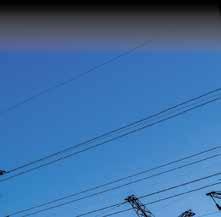


Hitachi Energy has signed a long-term service agreement with Société Nationale d’Electricité (SNEL), the Democratic Republic of the Congo’s national electricity company, to secure power supply in the country’s most important power transmission asset: the Inga-Kolwezi high-voltage direct current (HVDC) link. Hitachi Energy is a global technology leader that is advancing a sustainable energy future for all.
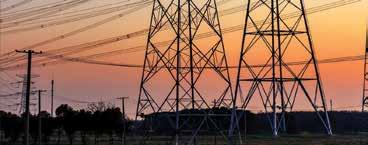
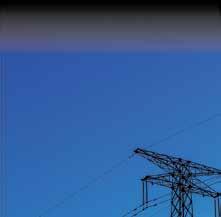
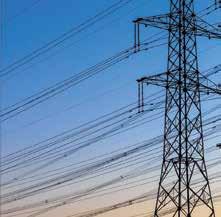
The link supplies up to 1 000 megawatts of emissionfree electricity from the Inga Falls hydropower plant in the far west of the country, to the Kolwezi mining region in the south. With a length of 1 700km, it is the longest HVDC link in Africa. It also enables the DRC to export surplus power to the member countries of the Southern African Power Pool.
The agreement continues the close collaboration between SNEL and Hitachi Energy over the past 40 years, to ensure the link operates at maximum availability and reliability over its long operating life. Hitachi Energy supplied the two converter stations at either end of the link in 1982, and has subsequently upgraded them and doubled transmission capacity.
As part of the agreement, Hitachi Energy will assess the precise service needs of the converter stations and develop a preventive maintenance programme and supervise its implementation over the next five years. The agreement includes training, knowledge sharing and expertise enhancement of SNEL service personnel.
“We are delighted to be continuing our long collaboration with SNEL to protect the nation’s investment in its most important power transmission link,” said Andreas Berthou, Global Head of HVDC at Hitachi Energy. “This long-term service agreement demonstrates how we work closely with the customer to secure availability and reliability over the entire lifetime of the asset.”
With the new MCC, operators will now be able to conduct a straightforward process of isolating the unit they want to attend to – simply by opening a latch, turning a sha and drawing out the relevant board. It is then secured to allow work to proceed safely on the specific equipment, while the plant continues running. Yeboah emphasises that access to the live parts is not possible when the functional units are removed, significantly enhancing safety.
“Once a board is taken out, the design ensures that there is no risk of electrical shock to the operator,” he says. “To further enhance safety, the board can also be placed in ‘test’ mode for safe testing procedures.
“In our experience many process plants in our region operate under the same constraints as this customer, having to completely shut down when maintaining equipment,” says Yeboah. “With this innovative fully withdrawable board solution, we fully expect there to be considerable interest by other operations.”
www.samining.co.za 4 SA MINING NOVEMBER / DECEMBER 2022 OUT OF AFRICA
© ISTOCK –zhaojiankang
Foster Yeboah.
Your uptime partner

Keeping your machines at peak performance is critical to your peak profitability. To help you meet your targets, our room and pillar mining equipment is designed for reliability – including remote machine health monitoring. Komatsu life cycle management, component exchange, parts, and in-market service programs give you peace-of-mind.
See how our machines and services can help you be successful at https://mining.komatsu/en-za/room-and-pillar


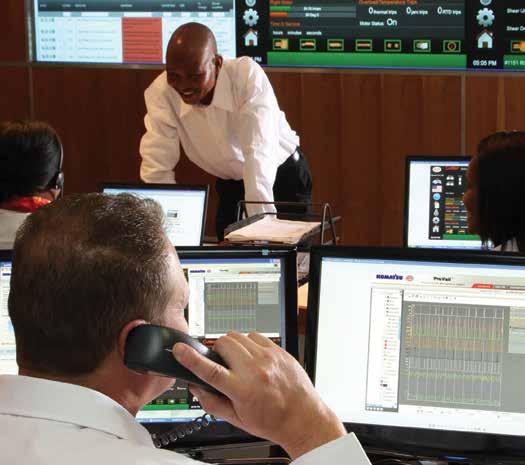
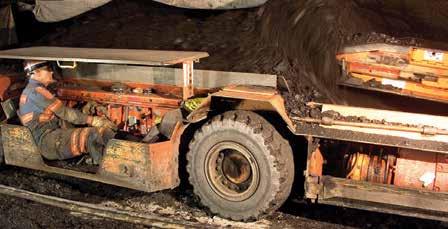
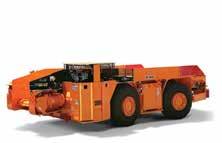
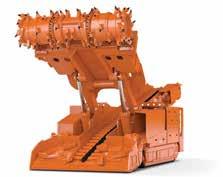
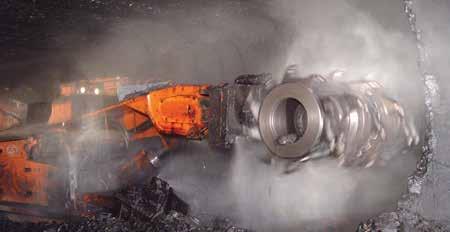
12 Commercial Road, Wadeville, Germiston
11
4000 Scan to learn more © 2022 Komatsu Ltd. or one of its subsidiaries. All rights reserved.
| Tel. +27
872
“WE WILL USE OUR OIL AND GAS TO UPLIFT OUR PEOPLE”
– AFRICAN ENERGY LEADERS

While there is consensus on the need for low-carbon energy, the new energy mix must also support Africa’s social development and the upli ment of its people. This was the message from several delegates to the VIP and Ministerial Symposium of the recent Africa Oil Week (AOW) conference held in Cape Town.
The event saw South Africa’s Mineral Resources and Energy Minister Gwede Mantashe welcoming over 30 energy ministers from across the continent.
“Energy poverty in Africa cannot be separated from the need for clean energy,” said Mantashe. “We need an energy mix that will sustain our development. The real issue is in the detail of the transition. The African energy transition must be systemic, it must be people-centric, and it must be community-focused.”
Other speakers also highlighted the hypocrisy of developed nations expecting Africa to pause its own oil and gas development, when developed nations’ success was o en founded on the very same.
“Oil and gas are assets that we plan to use to li our people out of poverty in Uganda,” said Uganda’s Energy and Mineral Development Minister Ruth Nankabirwa. “However, some members of the international community are opposing this. It is like they are asking Africa to be poor.”
Nankabirwa added that the international
community’s call for Africa to avoid developing its own resources was especially galling, considering the continent is responsible for only 3.8% of global carbon emissions.
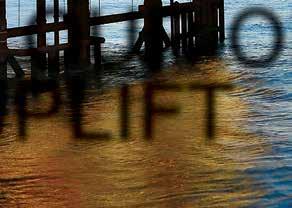

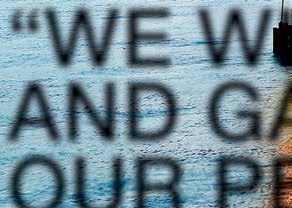
“We need an Afrocentric energy transition – Africa must look a er its own interests. We must be fair to ourselves,” said Africa Oil Week ambassador Dr Emmanuel Ibe Kachikwu, former minister of state petroleum resources and former group managing director of the Nigerian National Petroleum Corporation.
Africa Oil Week is considered to be Africa’s leading oil and gas event, bringing together governments, national and international oil companies, independents, investors and service providers.

Also delivering keynote remarks, Amani Abou-Zeid, the African Union’s (AU) commissioner for infrastructure and energy, said whether it was equity, access, or social development, Africa needed to ensure that it chooses energy sources that were in the continent’s best interests.
“We must ensure that we are the ones setting the African agenda and not blindly following someone else’s agenda. That said, Africa has never been a climate denier. We want to work with the world and for the world,” she said.
AOW is also a networking platform that supports deal-making and transactions across the African upstream, which will shape the continent’s future.
Highlighting the opportunities of natural gas, Kachikwu said there was no time to lose for Africa in moving to unlock its energy resources. “We must not pace ourselves according to emotion,” he said. “Our transition must be driven by Afrocentrism – by what is in the best interests of Africa’s people.”
“We have been working closely with South Africa’s Department of Mineral Resources and Energy and over 30 governments, as well as the AU, to ensure today’s dialogue pushed a message of unity among African leaders. It is imperative that the continent strives to define its own energy mix, compatible with the needs of our people and the broader economic development of the continent,” said Paul Sinclair, VP of energy and director of government relations at Africa Oil Week and the Green Energy Africa Summit. ■
www.samining.co.za 6 SA MINING NOVEMBER / DECEMBER 2022 IN BRIEF
© ISTOCK –curraheeshutter
We need an Afrocentric energy transition – Africa must look a er its own interests. – Dr Kachikwu
“ “

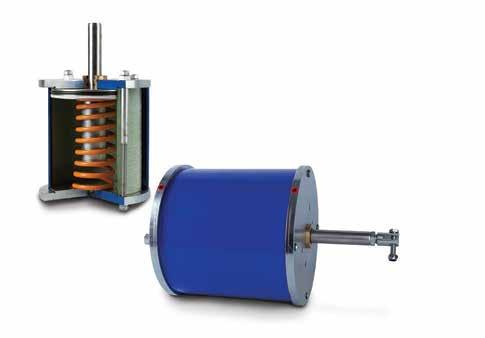
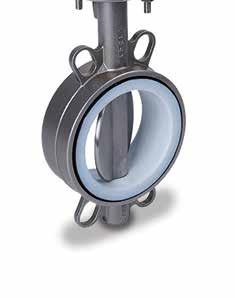

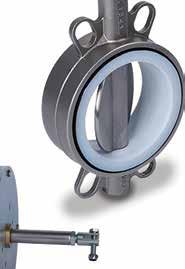

BLOWING OPEN



THE AFRICAN MARKET
By Rodney Weidemann
When your business is explosives, especially when you are among the top three producers in the world, focusing on the priorities of life and safety simply has to be core to everything you do. This is certainly the case for Enaex, a company that is dedicated to creating a safer and better industry for the future, by humanising mining.
Enaex Africa’s CEO Francisco Baudrand notes that apart from this life-a irming goal, the company has expanded into Africa to help drive long-term growth and new investment opportunities in the mining industry.
“South Africa was the beginning, and from here, there have been expansions into countries like Botswana and Zambia, which have allowed for local partnerships, job creation, training and upskilling, all while investing in new projects to expand the mining industry,” he says.
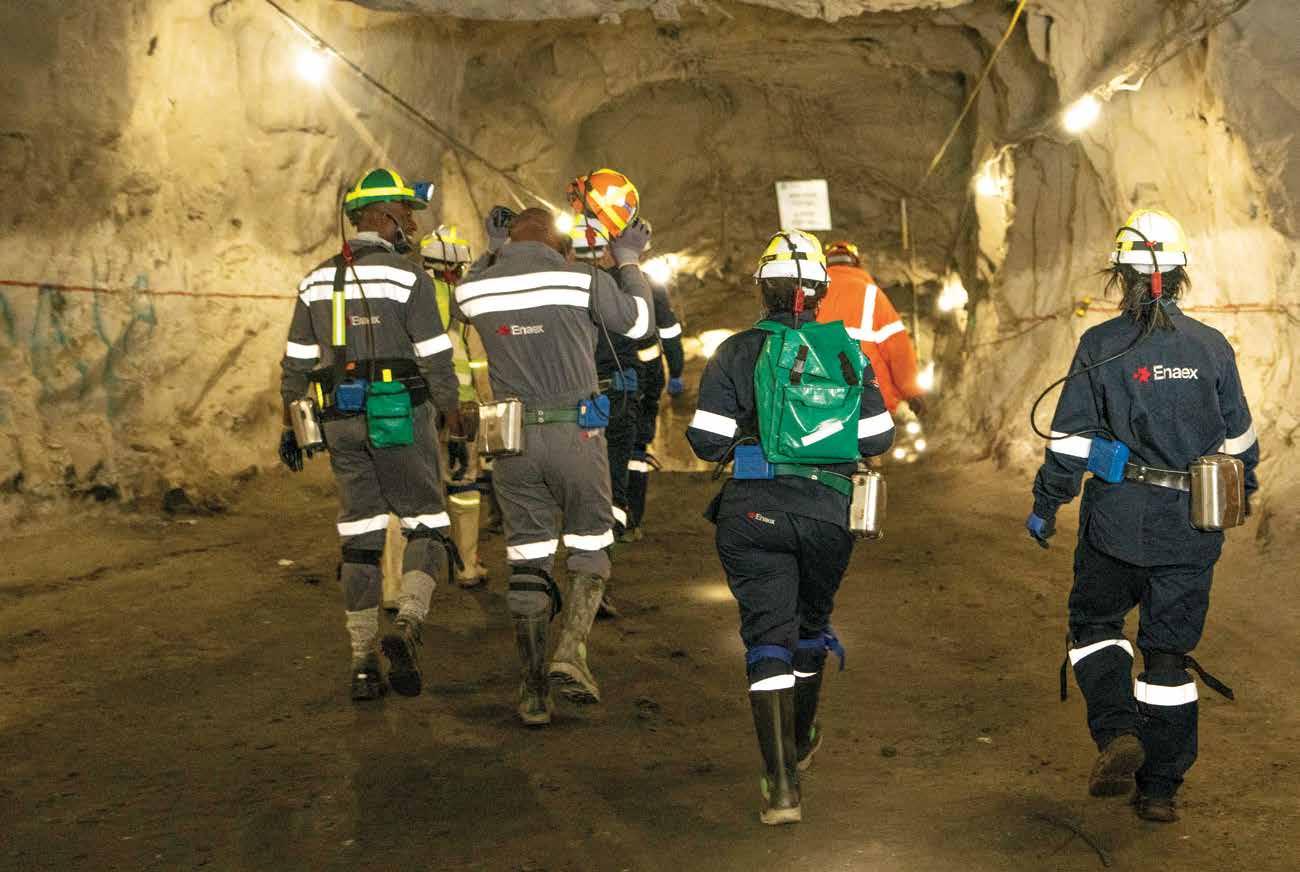
THE SOUTH AMERICAN CONNECTION Baudrand says he joined Enaex in 2011 as a young manager, taking on the position of business development director. This led to him being placed in charge of business development and strategic planning at Enaex’s head o ice in Santiago, Chile.




“At the time, Enaex was only focused on the local Chilean mining sector, through the ammonia nitrate production and blasting services it provided to the industry – although we did have a small operation in Argentina as well.
“As a business development director for Enaex, my role included taking the lead in identifying and leveraging the capabilities that our explosives o ered internationally for the mining industry as a whole. This gave me a strong appreciation of the potential international explosive market.”

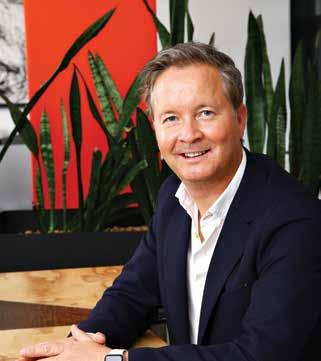
He adds that appreciating the international market soon led to the launch of a business in Colombia, with Enaex investing in a business in Peru just two years later. He was also part of the team that participated in the acquisition of
a Brazilian subsidiary, closely followed by a key game changer, notably the 2015 acquisition of Davey Bickford, a French subsidiary that produces electronic initiation systems.
“This particular acquisition was a very important one in our history, because at the time, Enaex didn’t have an electronic initiation solution. Moreover, while the new subsidiary significantly improved our product set, Davey Bickford was also already an international company, selling its products in the United States (US), Mexico, Latin America, and Australia. This really boosted our global footprint.”
In fact, notes Baudrand, Enaex used the footprint of Davey Bickford to help build its business in the US and Mexico.
www.samining.co.za 8 SA MINING NOVEMBER / DECEMBER 2022 BLASTING & EXPLOSIVES COVER STORY
Explosives manufacturer Enaex Africa is taking on the African market with a strategy grounded in safety, quality, people, local economic development and corporate social responsibility
Francisco Baudrand.
“My most recent role was where I took the lead in driving forward a joint venture Enaex undertook with Sasol, which is ultimately how I became the CEO of Enaex Africa,” he says.
GATEWAY TO AFRICA
Pointing out that the Sasol explosives business was identified as having substantial growth potential, something that could best be unlocked with the collaboration of an international partner, he adds that the company also saw South Africa as the gateway for an expansion into Africa.
“For example, we knew that Botswana, with its strong mining sector, was a place

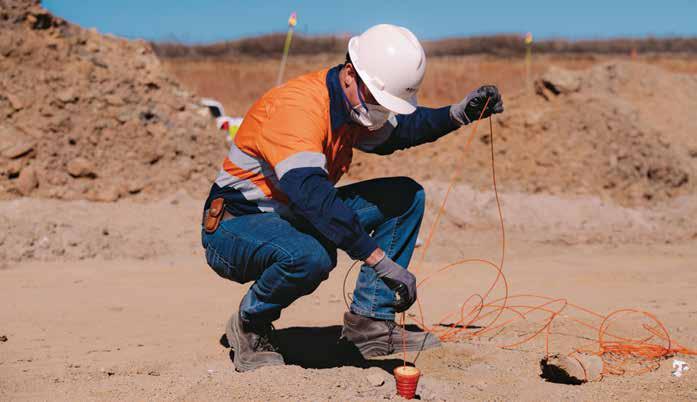

ENAEX AFRICA’S SHAREHOLDING BREAKDOWN

Enaex: 51%, Sasol South Africa: 23%, AFRIS: 26%
Safety above all.
BEING SOCIALLY RESPONSIBLE
Enaex Africa believes strongly in corporate social responsibility (CSR), says CEO Francisco Baudrand. To this end, the company is always aware of the demands from, and the needs in, the communities where it operates.
“In fact, we believe in ‘going beyond CSR’ – which is what we call our new project – by doing something that supports a new community; one that is not specifically related to a mining company. In this way, we are able to directly help and change the lives of many people.
“We are launching a complete initiative that involves sponsoring an early childhood development centre in Limpopo, in the Steelpoort area. We understand that education is one of the pillars that is absolutely transformational for children. This is why we feel it is so important to assist children under the age of five, because this is the period in a child’s life that is considered the most important developmental period.”
He says children who su er from malnourishment during this period o en fall behind in their mental development, which impacts their ability to read by the age of seven or so. And if they can’t read properly, their education will always be stunted.
“As part of the project, not only are we starting with providing basic nutritional care, we are also upgrading the infrastructure and technology, as well as upskilling the teachers. We hope to use this as a template for doing something similar in other locations across the continent where we operate.
“The matric pass rate in this particular area has been below the 50% mark, and similar to most areas in rural South Africa, they su er many social ills, including high school dropout rates, etc. Because CSR is so important to us, we are looking at projects that impact this community holistically. So our next step is a primary school project, with the ultimate goal to provide these learners with better education that will open up opportunities to go to university, and maybe even to come and work for Enaex someday,” says Baudrand.
we could supply explosives to, directly from South Africa. Moreover, there was a previous history with Sasol in the region. Botswana is a country where we are seeing important foreign investments in new projects, which means the country will continue its mining growth, along with its increasing consumption of explosives – which is, of course, our core business.
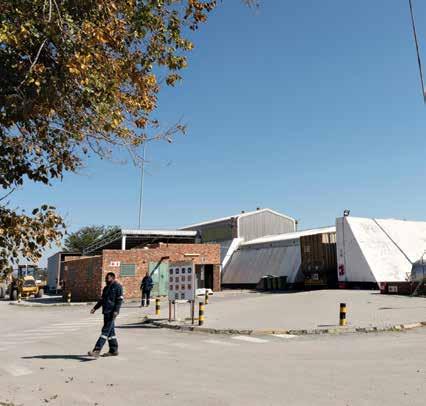
“In June 2019, a er a robust evaluation, Enaex was selected as the preferred strategic partner to create a world-class explosives business on the African continent through the
acquisition of the Sasol explosives business. In July 2020, Enaex Africa commenced operations as the majority shareholder and controlling partner, with the current shareholding including Enaex (51%), Sasol South Africa (23%), and AFRIS, as a BBBEE partner, with 26%.”
Enaex Africa is undoubtedly the most important direct Chilean investment in South Africa, notes Baudrand, and probably on the entire continent. The acquisition of Sasol’s explosives business was thus the first stage of expanding the company’s footprint across Africa.
www.samining.co.za SA MINING NOVEMBER / DECEMBER 2022 9
>
“Of course, this first stage also involved substantial investments in South Africa. Firstly, we invested in our Secunda plant, to increase the capacity of our bulk emulsion production. We have managed to increase our capacity by 20%, along with growing the warehousing, for storage of bulk emulsion, by 50%,” he says.
“This was our first important investment, and was done in parallel to another project, namely the construction of a first out of Europe assembly plant for electronic initiation systems. This will allow us to increase our local procurement, employment opportunities and skills development for our youth, and in the long run [provide] a better quality of life for families.”
Enaex has also invested capex in order to increase its fleet of MMUs (mobile mixing units), which are the trucks used specifically in opencast mines. He explains that the company has also invested capex to increase the number of pumps that are used in underground mines, to pump bulk emulsion as well. Both are investments of growth, and form part of a long-term plan whose core focus is growth.
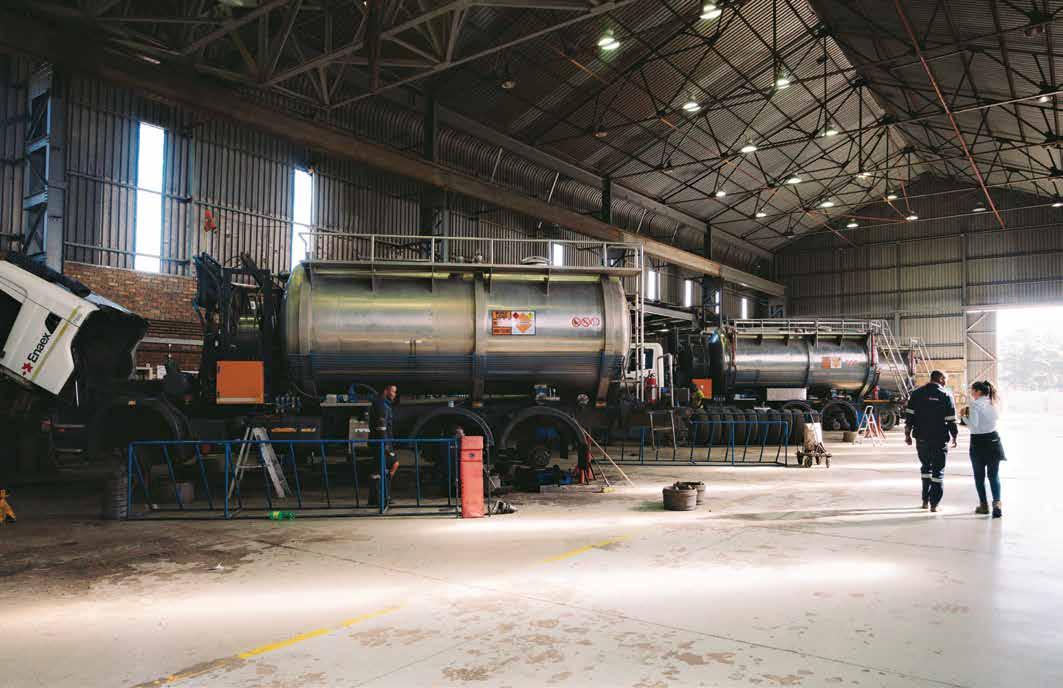
“I need to add that Africa is a very challenging continent, and we have faced di iculties especially within the supply chain. During October this year, we have been challenged, along with many other suppliers in this industry, to fulfil all our contracts. I believe it is very important that we are always honest and transparent when we are overcoming di iculties.”
THE FUTURE IS BRIGHT
Already, the move into the African market, via South Africa, is paying dividends. Enaex now has operations outside SA, with businesses in Namibia, Lesotho and Botswana. In addition, Baudrand states that the company has plans to move into the copper belt soon, mainly in Zambia.
“We believe Enaex Africa was born to become the leaders in mining explosives on the continent, and with these expansions, our goal is to partner with key local entities, where people have the intimate knowledge of the businesses, partners and people in the local mining sector.
“Local market knowledge is always critical, particularly in countries that continue to grow their mining industries. A er all, such growth will obviously require foreign investments, but these are best directed using local understanding of the sector and markets.”

Baudrand suggests that as far as the future of Enaex and Enaex Africa is concerned, it certainly includes the expansion into green ammonia production for explosives. Enaex in Chile is already taking the lead with this, he adds, and
has launched both its strategy and implementation. The company is now slowly beginning to produce green ammonia for ammonium nitrate production, the key raw material for explosives. Using green ammonia is beneficial, for example the protection of resources and the environment, and is well aligned with modern mining customers’ interests and focus.
“For us, the goal is all about building a safer future on the African continent regarding mining, through the importation of tele-operated devices and robotics, which will also allow for upskilling in the local communities, from which we hope to draw the employees who operate them.
“In fact, at Enaex Africa we value safety above all, and we put it first in everything that we do. We include this value when we expand our operations into di erent countries across the continent. This is because not only do we want to keep our employees safe, but we also want to enhance their skills and train them correctly. And our goal is to do all of this while establishing healthy, local partnerships that continue to build and grow the economies in which we choose to expand our footprint,” Baudrand says. ■
www.samining.co.za 10 SA MINING NOVEMBER / DECEMBER 2022
The Sasol explosives business was identified as having substantial growth potential, while South Africa was viewed as the gateway for an expansion into Africa. – Baudrand
“ “
BLASTING & EXPLOSIVES COVER STORY
Creating a world-class explosives business in Africa.
CAN A MINING COMPANY GET
‘SLAPP-ED’?
 By Muhammed Khan, Director at NSDV
By Muhammed Khan, Director at NSDV
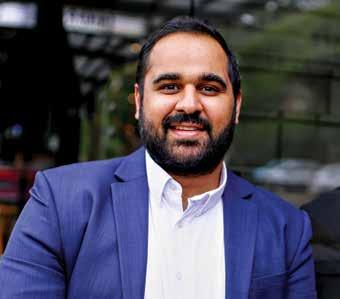
When we think about strategic litigation against public participation (SLAPP) lawsuits, we think about big companies using their considerable resources to institute litigious proceedings, seeking exorbitant amounts of damages from people who, for example, criticised their mining operations. These big companies’ goal is not to recover the damages, but rather to intimidate and silence such people, who could include civil society, the public and the media.
The question we are asking here is whether or not a mining company could find itself getting SLAPPed. The short answer is: probably not.
SLAPP was a novel defence raised by defendants who were being sued by two related mining companies – and certain directors thereof – for defamation in the matter of Mineral Sands Resources (Pty) Ltd v Reddell.
The court described SLAPP in great detail and stated: “Essentially its [SLAPP] aim is to silence those challenging powerful corporates on issues of public concern. In essence, the main purpose of the suit is to punish or retaliate against citizens who have spoken out against the plainti s ... The signature elements of SLAPP cases [are] the use of the legal system, usually disguised as an ordinary civil claim, designed to discourage others from speaking on issues of public importance and exploiting the inequalities of finances and human resources available to large corporations, compared to the targets.”
The court held that the defamation suit
was not genuine and in good faith, but merely a pretext with the purpose to silence opponents and critics. The court further recognised that the SLAPP suit defence constituted a valid defence in South African law against the defamation suit.
Considering the description of SLAPP, it is highly unlikely that a mining company could fall victim to it. However, this does not mean that abuses of legal process cannot be used against mining companies.
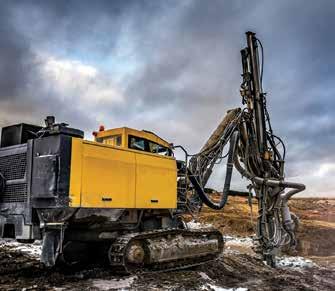
Mining in South Africa is highly regulated and requires numerous licences, authorisations and other similar regulatory approvals to lawfully undertake. To mine in South Africa, a company needs at a minimum the following:
■ A mining right issued in terms of the Mineral and Petroleum Resources Development Act, 2002 (MPRDA).
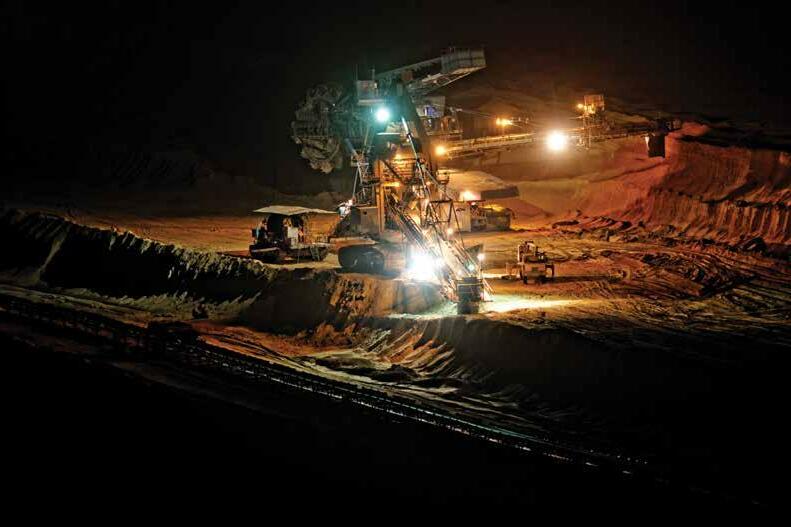
■ An environmental authorisation issued in terms of the National Environmental Management Act, 1998 (NEMA).
■ A water-use licence issued in terms of the National Water Act, 1998 (NWA).
APPEALS AND SUSPENSIONS
The MPRDA, NEMA and NWA each make provision for appeals against decisions taken by the relevant regulator to issue licences under the relevant act. For example, the issuing of a mining right can be appealed under section 96 of the MPRDA, the issuing of an environmental authorisation (EA) can be appealed under section 43 of NEMA, and the issuing of a water-use licence (WUL) can be appealed under section 148 of the NWA.

The appeal in terms of section 96 of the MPRDA does not automatically suspend the issuing of the mining right and the holder (despite the lodging of the appeal) could theoretically still mine under the mining right. However, a company not only requires a mining right to mine. It would still likely require an EA and WUL.
Considering this, an appeal lodged against the issuing of an EA or a WUL has the e ect of immediately/automatically suspending the relevant EA or WUL.
Thus once an appeal against the issuing of an EA or WUL has been lodged, the holder >
www.samining.co.za SA MINING NOVEMBER / DECEMBER 2022 11 FINANCE & LEGAL
Strategic litigation against public participation (SLAPP) is fast becoming a way for those with financial reserves to silence critics, such as civil society, the public and the media
© ISTOCK –Juan-Enrique
© ISTOCK –Nneirda
Muhammed Khan.
would no longer be able to undertake the listed activities or water uses authorised thereunder – because of the immediate/ automatic suspension – and will not be able to commence mining.
For a major mining company, the hold placed on one mine or operation may not have a devastating impact. However, for a junior miner with a single mining operation, such a stoppage could have potentially devastating and dire consequences, not only for the junior miner itself, but for its employees and the surrounding community, which would otherwise benefit from the mining through the fulfilment of social and labour obligations.
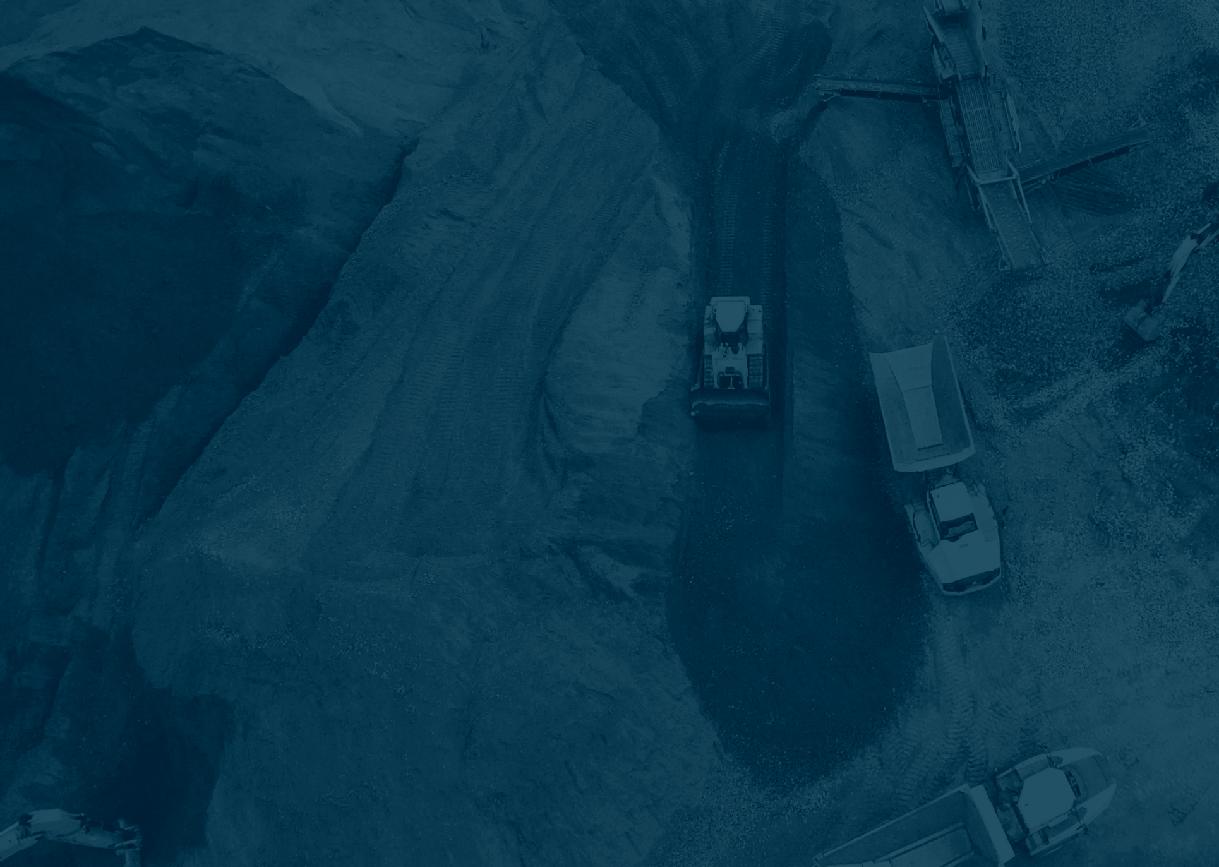
Both NEMA and the NWA provide that the respective minister (responsible for the administration of the act) may direct that the relevant authorisation or licence is not suspended pending the determination of the relevant lodged appeal. However, there is no prescribed method or time frame to obtain the relevant minister’s upliftment.
To further exacerbate matters, while both the MPRDA and NEMA provide for time periods for the determination of their respective appeals, the time periods are rarely adhered to by certain regulators, and the determination of the appeal usually takes a significant amount of time.
Furthermore, the NWA has no time periods for the determination of an appeal in terms of section 148 of the NWA.
SLAPP OR SLAM?
In the lodging of appeals, certain interested groups such as civil society, but even competing mining companies, could potentially seek to halt mining operations by lodging frivolous appeals. This would probably not be a SLAPP, but more of a SLAM (strategic litigation against mining).
So what can be done? Should mining companies be lobbying lawmakers for legislative reform? In typical legislative proceedings before a court, if a party loses a matter, they are generally ordered to pay the legal costs of the other litigating party (usually on a predetermined scale).
A similar reform could be introduced to dissuade frivolous appeals from being
lodged, particularly where they have the effect of automatically suspending the relevant licence or authorisation. Additionally, the applicable legislative provisions could better define the way in which an automatic suspension is uplifted following the lodging of an appeal.
Ironically, this type of legislative reform, which includes the potential of having an adverse cost order, could similarly be used by companies to intimidate or prevent the lodging of appeals, in the same way as a SLAPP case.
Whether it’s a SLAPP or a SLAM, legislative measures should be introduced to dissuade the lodging of frivolous appeals. However, should a frivolous appeal still be lodged, such appeal should be vehemently opposed, not only because it may have very serious ramifications for a mining company, but also to curb any such similar conduct in the future. n
Crushing complexity
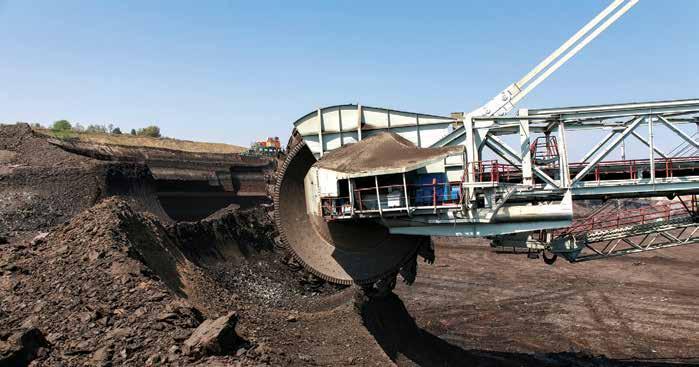
Laws, bylaws, charters and Acts… just when you think you’ve gotten to the bottom of South Africa’s complex mineral rights legislation, one discovers a shaft-load more to unearth.
Thankfully for our clients, NSDV’s highly experienced experts are anxious to do the heavy lifting for them. With always-on monitoring services that cover hundreds of touchpoints, we ensure they remain compliant, avoid any future complications, and ultimately rest easy.
To avoid a right(s) royal mess, speak to us today at nsdv.co.za
FINANCE & LEGAL
© ISTOCK –Violetastock
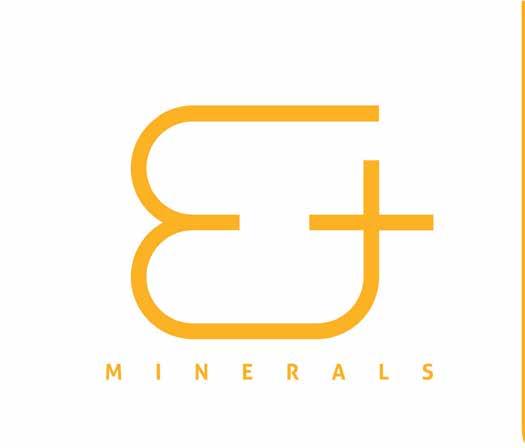
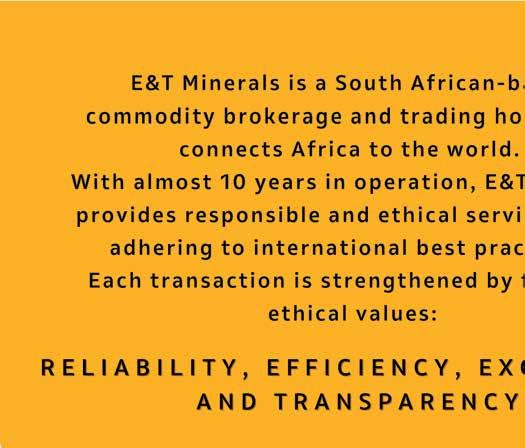

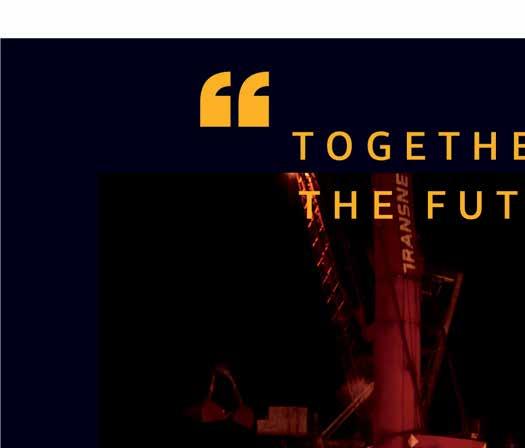
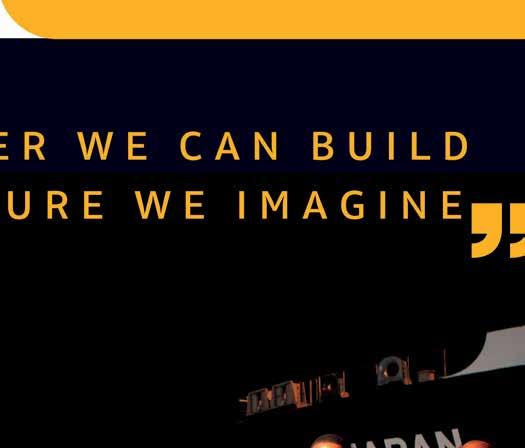


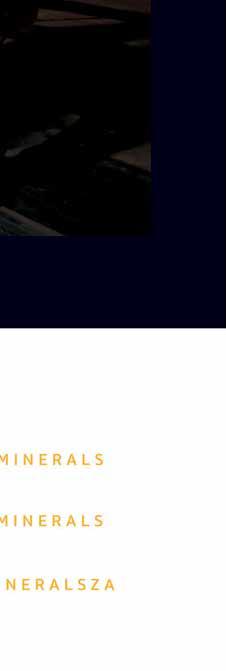
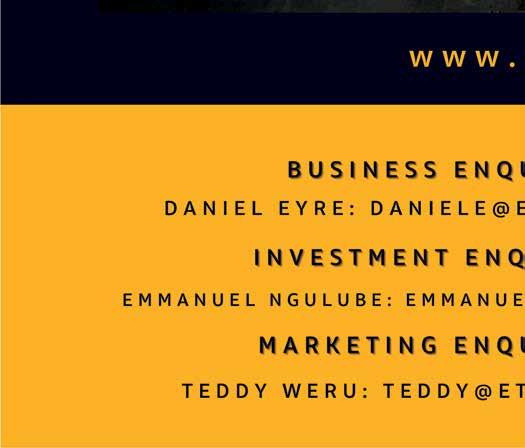
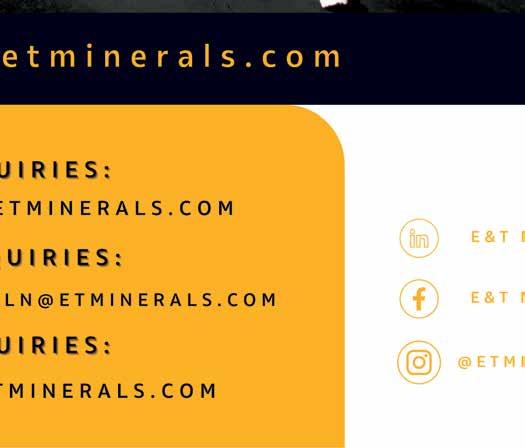 By Rodney Weidemann
By Rodney Weidemann
MINERALS
While trading and investment firms are vital to blue-chip operations and junior miners alike, very few are willing to get involved in mineral beneficiation. This is what sets E&T Minerals apart, as the company has committed to creating greater value for clients, while improving its own profitability, by providing beneficiation solutions.
E&T Minerals describes itself as a “Southern African trading and investment firm specialising in coal” and was founded by Emmanuel Ngulube, who serves as CEO, and Daniel Eyre, the COO. The two bring a deep knowledge of African commodities, logistics, and business practices to their clients.
Ngulube points out that the company’s client base extends across a range of industries, from steel manufacturers and paper mills to power generators and multinational commodity traders. The team, he says, is expert in identifying and securing key resources sought by its clients, from a large network of reputable producers.
“We have built this business on the principles of reliability, e iciency, excellence and transparency, and our focus is on sustainable mining assets, with sustainable reserves, that we can structure long-term trades on the back of,” he states.
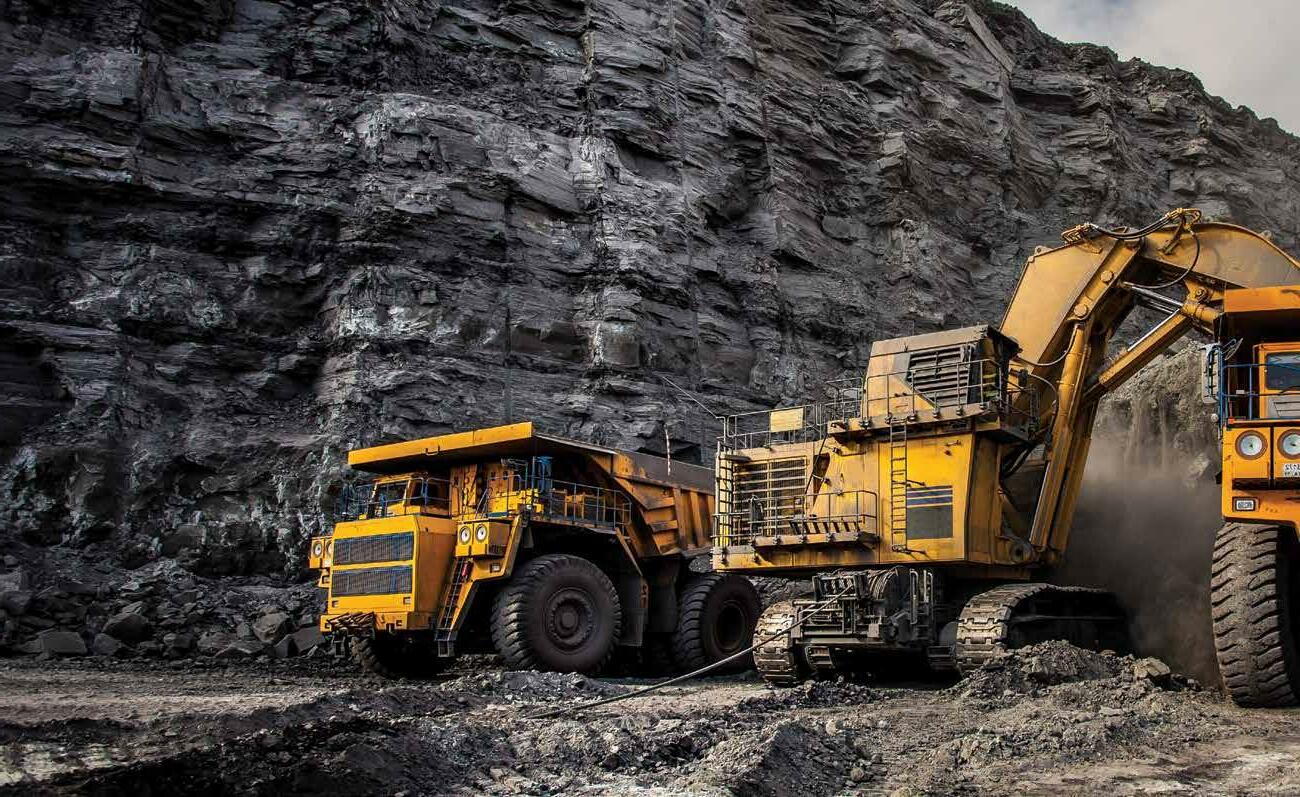
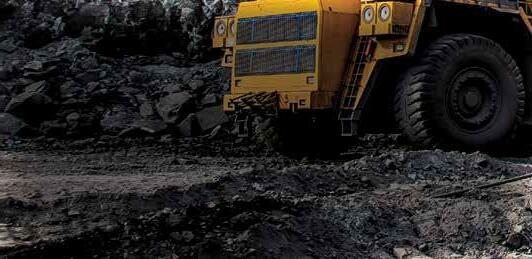
“When we started this business, coal appeared to be a dying asset, largely due to the drive to exit fossil fuels. We were advised by others to consider other markets instead, as the export market for coal had dropped massively and things certainly didn’t look good.
“You could say it was a bit of ignorance on our part, being new to the game, but we also wanted to get into the energy space and needed an entry point. The beauty of coal is the sheer volume of product, meaning it was a market with a much lower barrier to entry than others.”
He and Eyre both have strong feelings around energy in Africa, noting that there are still a lot of Africans with no access to energy. Therefore, while the world certainly needs renewables, they believe the continent should continue investing in renewable and non-renewable energy markets.
“Our prediction is that it won’t be going away any time soon, which is why we invested in it – although with the understanding that it has a limited horizon of around 20 to 30 years,” says Ngulube.
Eyre adds that while the company’s niche is coal, for all the reasons outlined above, E&T remains open to anything.
“We are currently looking at various other commodities, especially those related to renewable technologies. A er all, moving forward in this space, battery storage will be key, so we are looking at lithium assets in Namibia, the copper boom in Zambia, as well as the potential for chrome and other rare earth metals. But these renewable-focused assets need to be developed first,” he says.
“We did have some di iculty with the European markets when the initial thrust of going green occurred, and there was a distinct lack of investment in coal in these markets which is still the case today. However, we are now witnessing a pushback suggesting coal will still be around for some time, especially as I suspect the energy crisis will worsen before things improve.”
COAL – AND OTHER COMMODITIES
“We understand the need for a ordable energy in Africa, and while we agree that sustainability is critical, coal and oil are going to remain the baseload for Africa’s energy for many years to come. Considering the continent’s travails, coal can be used as a means to upli people, because it is so a ordable and abundant.
In fact, notes Eyre, Africa is uniquely positioned to be a “saviour” of Europe in the current scenario with the Russia-Ukraine war. A er all, he says, Russia was the western nations’ anchor supplier of energy. The lack of Russian gas has created a vacuum of supply, so E&T believes it has the potential to be a major contributor to the currently distressed European market.
AN ENTREPRENEURIAL APPROACH
www.samining.co.za 14 SA MINING NOVEMBER / DECEMBER 2022 COMMODITIES CORPORATE PROFILE
“The
business
was launched by
myself
and DELIVERING RELIABILITY, EFFICIENCY, EXCELLENCE AND TRANSPARENCY E&T
We have built this business on the principles of reliability, e iciency, excellence and transparency. – Ngulube
“ “
trading and investment firm offers junior miners and blue-chip firms alike access to energy-focused commodities, including coal, and those minerals
development
renewable
© ISTOCK –EvgenyMiroshnichenko
Local
related to the
of
resources
Emmanuel, two childhood friends with a dream, and we have grown organically since then. We have placed a lot of emphasis on building the right team at E&T, and it has been very rewarding to employ a youthful team with strong expertise that otherwise might have been sitting at home without jobs,” says Eyre.

“South Africa obviously has a major youth unemployment challenge, and we feel the people best positioned to fix this problem are the youth themselves. We are thus a young team, but we have brought in people who have the same vision as us, and the skills to position us as best in class. Not only is it really cool to have people who are incredible at what they do, which allows the business to focus on leading the pack, it also helps that our people are, by and large, very entrepreneurial.”
Ngulube takes up the story, explaining that E&T is willing to invest in its people’s ideas, even when these are not directly related to the business.
“We in fact encourage our people to build additional businesses, to have ‘side hustles’, and we help and support them to grow these too, as we recognise that each new entrepreneurial e ort will lead to the creation of more jobs for the youth. With this
approach, we have adopted a big-picture view of what’s best for the country as a whole,” he says.
As it is important to develop people and business, so it is equally critical for E&T to have the right partners to ensure its endto-end systems function e ectively. It is for this reason the company has a number of strategic partners throughout the value chain.
“We have taken the time to find the partners, assets and people that will work best within our business framework. The ultimate goal is to grow the business to a point where the European business will be sustainable, by delivering e iciency, stability and continuation of supply,” he adds.
“Our goal is to ensure that everyone in the chain benefits – where we can give reasonable returns to our shareholders, while also supporting the communities at the front line. For us, it’s about remoulding the way we do things to ensure that even the smallest players get their fair share, while providing the market with security that the product will be delivered.”

The key, he continues, is transparency throughout the chain, as this allows for challenges to be identified and quickly overcome, as well as providing the
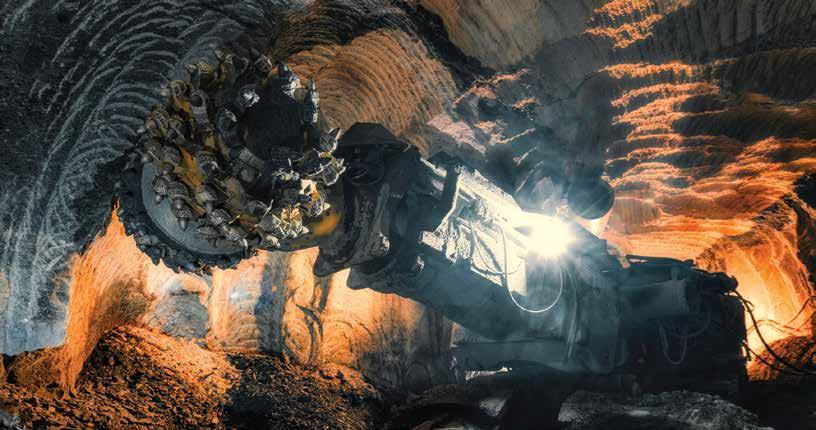
A MAIDEN VOYAGE
Daniel Eyre, COO at E&T Minerals, outlines one of the company’s recent big successes, explaining that one of the top power utilities in Europe had – in anticipation of the RussiaUkraine conflict – been seeking out alternative energy options, including e orts to find out if bulk commodity traders like them could deliver coal tonnage to port.
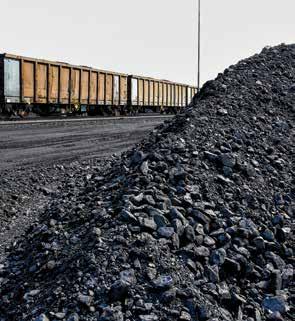

“The European utility owns its own fleet of ships and picks up coal around the globe, but due to the war, they came to us. This gave us sole access to a ship – as opposed to having to find space on another organisation’s ship – and enabled us to supply a shipment worth of coal direct to the end user.
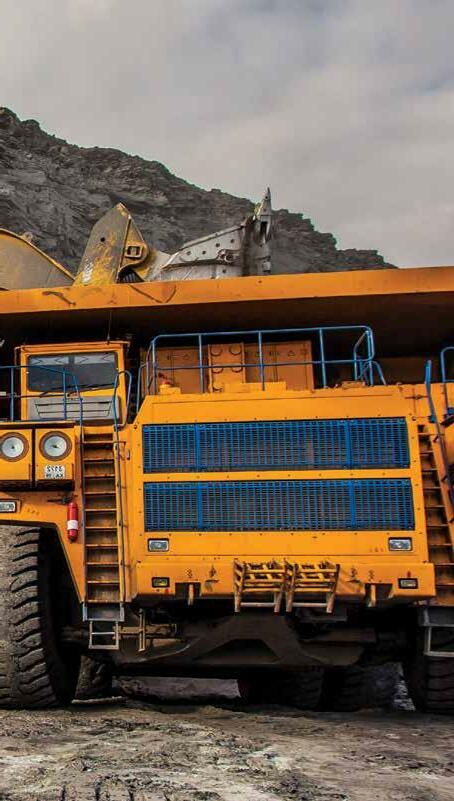
“This was beneficial to the junior miners we work with, who were able to gain direct access to comprehensive transport facilities, and an eager market for their commodities. Best of all, we signed a long-term contract with this utility, which means that this will now be an ongoing operation, with regular shipments undertaken on our, and our partners’, behalf,” he says.
knowledge of where it can be grown, and where it is working exactly as it should. The goal is to create consistency and understanding, as this is vital to ensuring that all those involved in the chain benefit regularly.
“Africa has a massive commodity base. What we need is to build our infrastructure and strengthen our focus, in order to be in a position to deliver commodities to the rest of the world. In the view of E&T, Africa is going to become a shining light for the world in this respect – a er all, we are one of the least tapped markets and we probably sit with the most resources.
“Therefore it is a matter of businesses like ours strategically setting up an end-to-end chain that will benefit ourselves, our youth, Africa more broadly, and finally, the rest of world as well,” says Ngulube. ■
www.samining.co.za SA MINING NOVEMBER / DECEMBER 2022 15
It has been very rewarding to employ a youthful team with strong expertise that otherwise might have been sitting at home without jobs.
– Eyre
“ “
© ISTOCK –Nordroden
© ISTOCK –Sunshine Seeds
Daniel Eyre and Emmanuel Ngulube.
PROJECT MANAGEMENT
SKILLS ARE VITAL TO THE INDUSTRY
Project management in the mining industry is a career o en described as being similar to chess, in that the playing field is constantly in flux, and it requires adapting your strategy to meet shi ing challenges.

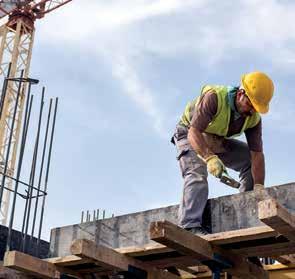
In addition, it o en encompasses the management of aspects like safety, procurement, cost and risk, and may entail organising a team of mining engineers, geologists and environmental specialists who need to collaborate to complete a project on schedule.
Paul Hanly, founder and CEO of New Leaf Technologies, points out that project management is a critical skill in the industry, because it is about balancing engineering abilities with managerial skills.
“Such experts are expected to manage teams of specialists, who have to work in unison to complete a project on time, within a certain budget and within the expected quality ranges. Without a project manager, things can go awry quickly and costs can rapidly get out of hand,” he says.
“It is a skill that is very much in demand in the industry, as many projects on a mine require a project manager – be it in the construction of a new road, or plant repairs, or even working with a team of geologists to see if a potential mine is viable.”
Asked about the training and qualifications required to be considered a competent project manager, he responds that this ultimately depends on the type of
project manager they aim to be.
“Ideally, a qualification approved and certified by the Project Management Institute goes a long way towards success. However, understanding the basic principles of project management is always a good start. Various fields of specialisation can be entered into, o en with an agile approach, where workrelevant short courses can lead up to a final certification. Good communication skills and good administrative skills are also critical,” says Hanly.
“Of course, the ability to train quickly and e ectively is key, so online learning technology o ers greater flexibility, while the metrics behind the learning can be analysed to see who may be best suited to a particular role. The trainer must also factor in how long someone in training is going to be unproductive for. Pushing this online can thus reduce learning time and improve productivity.”
Hanly adds that digitalisation will be key moving forward, because it can be so much more e icient and e ective, reducing time away from work as well as the cost of transport, accommodation and host training sessions.
“Learners are also able to work at their own pace, ensuring a more complete understanding of course materials. Learner management systems such as those we provide are highly sophisticated and able to identify any knowledge gaps. These are then revised until a full understanding is achieved.
A POOL OF TALENT
George Asamani, MD for Sub-Saharan Africa at the Project Management Institute, points out that numerous skills like project management are critical, but that employers cannot solve the skills gap issue alone. They need support from educators to build talent pools with skills relevant to today’s business needs.

“The African Development Bank reports that while 10 million to 12 million youths enter the workforce every year in Africa, only three million formal jobs are created annually. The answer may be to focus more on skills-based hiring, which emphasises the specific skills needed for a position, rather than educational credentials or prior experience,” he says.
Project management requires, among others, the ability to manage:
■ Safety
■ Procurement
■ Cost
■ Risk
“Using a variety of multimedia, such as videos and games, to demonstrate complicated processes has the ability to simplify understanding. In this way, it helps to achieve far better retention of knowledge than traditional, copy-intense manuals.”
www.samining.co.za 16 SA MINING NOVEMBER / DECEMBER 2022 TRAINING & SKILLS DEVELOPMENT
■
There is a huge demand for project management skills in the mining sector. Fortunately, digitisation is making training for a career in this space much simpler and easier
© ISTOCK –carloscastilla © ISTOCK –ilkercelik
MENAR FOCUSES ON ENHANCING MINING INDUSTRY KNOWLEDGE

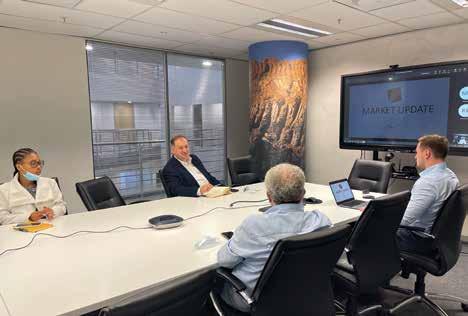
In a technologically evolving world, it has become clear that the local mining industry requires a highly skilled workforce if it is to succeed, because failure to adapt and learn will mean they will struggle to remain competitive. For this reason, mining companies need to consistently improve graduates and current employees by o ering them the skills they require to match the ever-changing needs of the industry.
Mining investment company Menar established the Menar Academy in 2017, an operation encompassing in-house and public facilities for knowledge enhancement, with the motto: ‘Learn, Enhance and Share’.
As a new-generation company that turns knowledge into investment and production, says company MD Vuslat Bayoglu, Menar has a corporate culture that celebrates the importance of always being open to learning, continuously enhancing knowledge, and generously sharing that knowledge.
“For example, there is a desperate need for mechanised training programmes to provide artisans with greater technical knowledge to build, maintain and repair mining machinery and equipment. In particular, there is a need for specific skills in mechanised engineering, to service the growing number of trackless mining machines,” he says.
He says Menar also understands the importance of helping the media to gain a better understanding of the mining sector’s many technical elements and complexities. For this reason, the company had adopted as a key area of focus the provision of a course on Mining Journalism Training (MJT), which is now in its fourth year.
“The Menar Academy’s annual mining journalism training programme includes mining experts, senior journalists and other sector stakeholders who can provide young journalists with invaluable insights into the
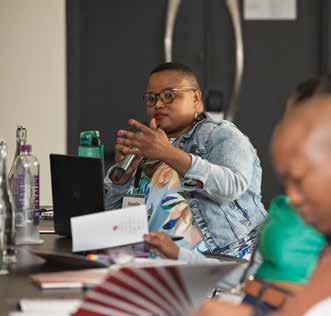
sector. We have focused on this because mining is one of the most important sectors of the SA economy, and strong media is imperative for sustainable mining.”

COMMUNITY FOCUS
Bayoglu says Menar also runs several human resources development programmes geared towards upli ing the skills development base at its subsidiaries’ operations.
“Our various training programmes extend to internal and external participants, as well as learners and graduates. While Menar Group mining companies are committed to fulfilling the statutory obligations in this regard, as laid out in the [Mineral and Petroleum Resources Development Act], our companies strive to go beyond what is required.”
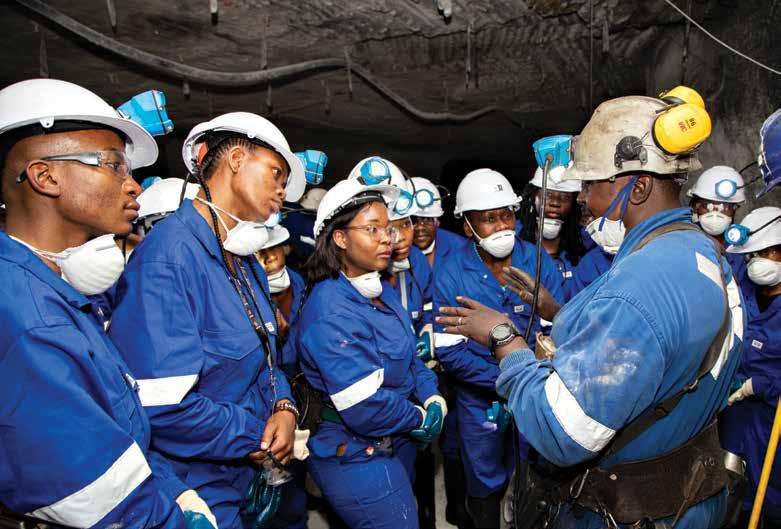
For this reason, a big part of its focus is on the communities in which it operates. He notes that the group o ers learnerships and internships to community members, employs operational sta from local communities, and engages local community groups, in order to raise awareness in their constituencies about all employment and training opportunities.
“The programmes are conducted in order to increase local community members’ opportunities to find employment in the sector, so we o er training programmes such as articulated dump truck (ADT), frontend loader (FEL) and excavator operator skills training.

“Another project is the Menar Youth Club, which involves senior Menar employees training younger sta . The aim is to increase younger employees’ motivation, help them to grow and develop their skills, and to increase their knowledge of the mining industry. By providing this information from various perspectives, they are able to gain insights into how the business is run, while also deepening the talent pool within the group.”

A third project is the Menar Job Shadowing Programme, which o ers a career development opportunity for participants who are given the opportunity to closely observe and interact with Bayoglu himself as he goes about his daily work activities.
“Job shadowers get the chance to observe strategy and management meetings, attend site visits, observe the dra ing of reports and technical reviews, and a range of other senior business functions.
“Ultimately, technology is increasingly being used to improve operational e iciency and productivity in mines. While these new digital technologies o er additional benefits like enhanced safety, reduced risk, and improved occupational health management, they can be complex and di icult to master.
“Therefore it is clear that the need for training is only going to increase as we move forward, and Menar, thanks to its Academy, is perfectly positioned to be at the forefront of helping the industry continuously upskill,” he says. ■
www.samining.co.za SA MINING NOVEMBER / DECEMBER 2022 17 TRAINING & SKILLS DEVELOPMENT CORPORATE PROFILE
Understanding the need for continuous training in a rapidly evolving sector, Menar’s Academy extends its training programmes to both internal and external industry participants
MJT site visit.
Job shadowing.
MJT seminar.
SA’S ZERO EXPOSURE
TO GLOBAL RUSSIAN DIAMOND BAN
By Itumeleng Mogaki
The Russia-Ukraine war has destabilised markets and supply chains the world over, including the supply of raw materials such as rough diamonds.
This is largely because more than 30 countries have imposed sanctions against Russia, cutting energy imports, blocking financial transactions and halting shipments of key imports such as semiconductors and other electronics. The United States (US) barred the import of “non-industrial” diamonds from Russia shortly after the invasion.
Rough Russian diamonds currently account for 30% of the global trade in the precious stone. And the US Treasury Department estimates that diamonds are one of Russia’s top 10 non-energy exports, totalling over $4.5-billion in 2021.
According to the Organisation for Economic Co-operation and Development,

severe disruptions to global markets caused by the war have exposed vulnerabilities to the security of the supply of raw materials critical for industrial production and for the green transition. For countries affected by supply chain vulnerabilities, there is potential to diversify sourcing through expanded production and accessing known critical raw materials reserves.

How is South Africa impacted by these supply chain vulnerabilities?


SUPPLY BUSINESS

AS
hasn’t already) lead to unwelcome diamond supply chain disruptions in South Africa.
“It’s unlikely there was or will be any supply chain disruptions. Remember that South Africa is a diamond-producing country, and in 2021 we produced 8% of the world’s total mined diamonds, by carat weight. Over and above that we produced nearly 10 million carats of diamonds, but imported less than one million carats,” says Appleyard.

The diamond industry in Southern Africa boasts a history of 150 years of discovery and mining, forming the cornerstone of the development of the core, modern economies at the southern tip of Africa.
The Southern African countries considered are South Africa, Zimbabwe,
www.samining.co.za 18 SA MINING NOVEMBER / DECEMBER 2022 DIAMONDS & GEMS
SA DIAMOND
USUAL Clare Appleyard, owner of Katannuta Diamonds, doesn’t think the Russia diamond ban could (if it
Have imposed sanctions on Russian diamonds
30 COUNTRIES
© ISTOCK –poco_bw
Following Russia’s invasion of Ukraine, over 30 countries imposed sanctions on Russian diamonds. We consider the impact this ban may have on the local market
30%
CONFLICT OVER DIAMONDS
The Kimberley Process (KP), a coalition of governments, the diamond industry and civil society representatives, which certifies that diamonds are not used to fund rebel groups, has some of its members divided over Russia’s invasion of Ukraine.
A er it invaded its neighbour in February 2022, Russia drew sharp criticism from civil society, which is pushing to broaden the KP’s definition of conflict diamonds to include state actors that use the stones to fund acts of aggression.
Namibia, Angola, the Democratic Republic of the Congo, Lesotho, Botswana, and eSwatini, the first five having a history of diamond production stretching back more than 100 years.
Appleyard adds that the ban on Russian diamonds hasn’t a ected their business operations, saying Katannuta Diamonds continues uninterrupted. “We source diamonds locally, so we’ve seen no interruptions in our supply at all. Our local suppliers are all still exceptionally well stocked and there’s been no challenge in sourcing the goods we use most.”

DIAMOND BAN A ‘POSITIVE’ FOR SA’S MINING COMPANIES
Nielette Henderson, director at SA Diamond Source, a wholesaler and retailer of polished diamonds, says she thinks the ban on Russian diamonds should have a positive e ect on South African diamond mining companies.

“There should be an increase in the demand for South African mined diamonds. There will also be an increase in prices for smaller diamonds, the type of goods Alrosa is known for producing.”

Alrosa is a Russian partially state-owned diamond mining company that specialises in exploration, mining, sales of rough diamonds, and diamond manufacturing.
LAB-GROWN DIAMONDS
Henderson reminds us that even though the country has seen little to no e ect, because of the Russian goods sanctions, the country is not only a world-leading source of natural or mined diamonds, but is also a world leader in manufacturing lab-grown diamonds.
“Russian diamonds refer to all diamonds originating from Russia, whether man-made or naturally mined,” says Henderson.
“Russia was the first country to develop

a machine that produced diamonds in an economic fashion. They lowered the overall cost of making the diamonds and increased the quality of synthetic diamonds. To date, Russia is still one of the top leaders of top-quality laboratory grown diamondproduction.”
Henderson also says we’ve reached the point where the diamond industry will be going through a lot of changes.
“It will be interesting to see how labgrown diamonds will a ect the demand and prices of natural diamonds. We are finding that nowadays, more couples are gravitating to engagement rings featuring lab-grown
© ISTOCK –RHJ
www.samining.co.za SA MINING NOVEMBER / DECEMBER 2022 19
>
global diamond supply coming from Russia ©
ISTOCK –RHJ
– Henderson
diamonds, because of the price tag,” says Henderson.
According to Henderson, these diamonds cost significantly less for a much larger stone than a mined diamond of the same size. “Millennials and Generation Z are increasingly embracing lab-grown diamonds, because they are eco-friendly, ethically sourced (conflict-free) and of course competitively priced.”
ADMIN ISSUES

Darren Etkind, owner of manufacturing and trading company Prodiam Trading, believes the sanctions predominantly impacted Alrosa.
“Alrosa must surely be severely affected by the ban, because there are global diamond industry bodies and other civil society representatives that are playing the roles of ‘watchdogs’ on the sale and distribution of rough diamonds coming out of Russia,” he says.
If anything, Etkind says, because there’s now a negative posture leaning towards any goods coming out of Russia, the South African administration side of diamond trading has been affected. This is because of the reasons stated above, and other payment issues as well – because a diamond is a commodity that gets traded on the

international market.




“Prodiam Trading has had zero exposure to the ban, and in any case, all rough diamonds are made available by the state-owned entity State Diamond Traders and are also accessible from open market groups through the tendering process,” says Etkind. n
www.tomra.com/mining
DIAMONDS & GEMS Make every diamond count with the COM XRT
/FR
300
Russia was the first country to develop a machine that produced laboratory-grown diamonds in an economic fashion.
“
“
© ISTOCK –GrafiThink
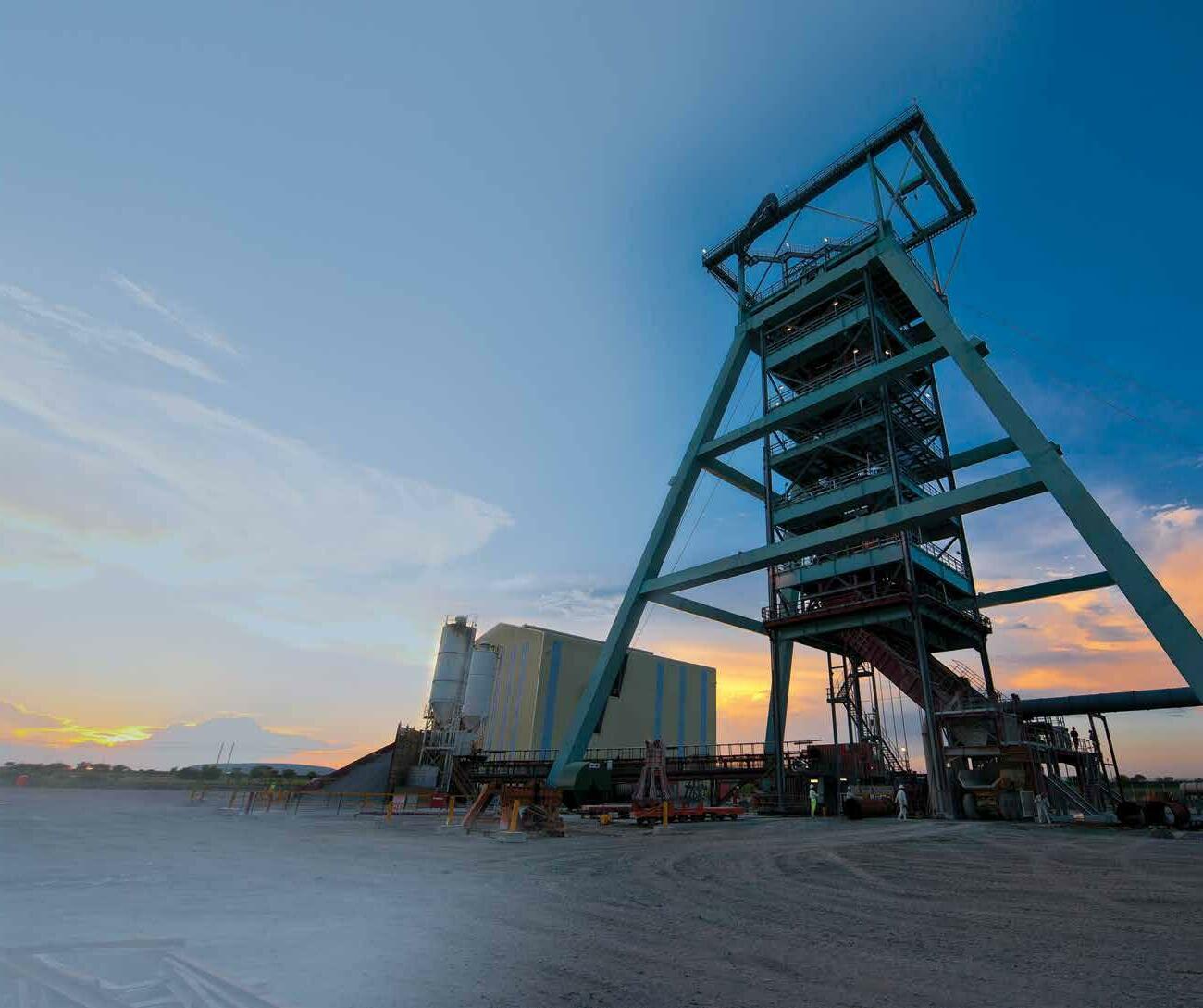


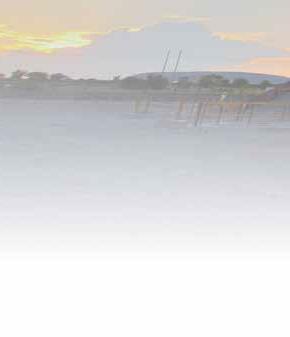





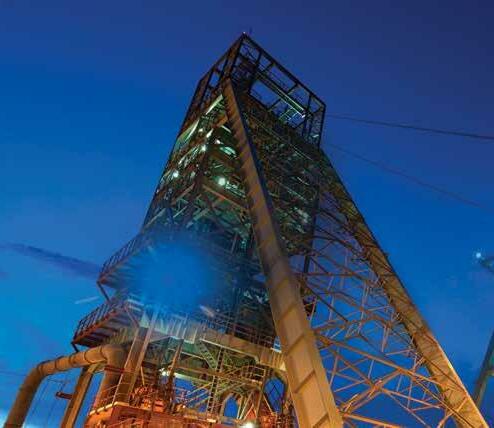


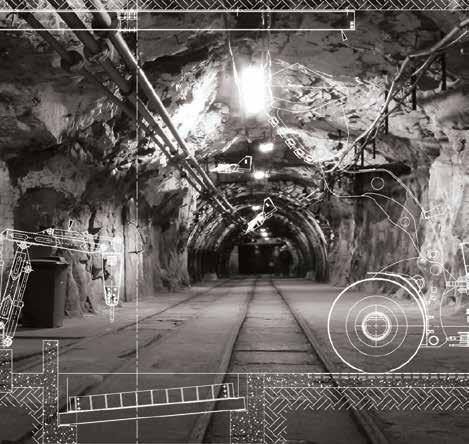
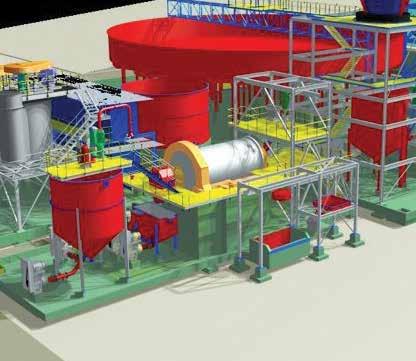
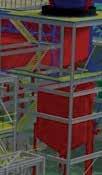
UMS GROUP Value driven solutions to the mining and metallurgical processing markets UMS Group is a unique single source provider that undertakes concept, feasibility, design & engineering, construction and refurbishment projects for its underground mining and metallurgical processing clients. UNITED MINING SERVICES GROUP UMS Ground Floor, Building 12 | Woodlands Office Park 20 Woodlands Drive | Woodmead Johannesburg | 2191 | South Africa Call Center +27 (0)11 445 4300 E-mail info@umsint.com Web www.umsint.com UMS has regional offices in the United Kingdom; USA (Nevada); Botswana; Zambia UNITED MINING SERVICES SHAFT SINKERS UMS UNITED MINING SERVICES METS UMS
THE TAILINGS DAM CHALLENGE
 By Rodney Weidemann
By Rodney Weidemann
The collapse of a tailings dam near the historic Jagersfontein Diamond Mine in the Free State in September ended with a flood of mine slurry that caused untold damage – destroying houses and cars and killing and injuring people.
This has raised questions about who should be responsible for tailings dams oversight and, in this article, the role of the consulting engineer in the planning, design and construction of tailings dams.
Michelle Porter-Wright, counsel in Allen & Overy South Africa’s disputes practice, suggests that the design of tailings facilities is a multidisciplinary a air.

“Design depends on the quantity and the individual characteristics of the tailings produced by the mining or industrial operation, as well as the climatic, topographic, geologic, hydro-geologic and geotechnical characteristics of the disposal site.
“It also depends on regulatory requirements related to dam safety and to environmental performance. Ultimately, what may work for one type of tailing product may not work for another type. As such, each situation requires its own design process,” she says.

Chris Campbell,
of
Engineers South Africa (CESA), adds that mining developments are multi-faceted and o en highly specialised, as is the area related to the planning, design and construction of tailings dams.
“There are not many specialists in this area, and the ones with the expertise are ageing and heading towards retirement. The advisory role on the siting and planning as well as the design falls within the expertise of these design engineers. They would then be commissioned by the client to supervise the construction of the dam, which should be carried out by a reputable construction company,” he says.
CODE OF PRACTICE
Porter-Wright notes that a consulting engineer’s role in a tailings dam project will be apparent from the construction contract and the relevant code of practice (COP) prepared and implemented by the specific mine to deal with mine residue deposits.
“In respect of the planning, design and construction of a tailings dam, the COP will, at minimum, require a professional engineer – as a function of their general obligation of due skill and care – to undertake certain preparations and certifications.
“For one, they will need to review and certify technical reports dealing with the characteristics of the mine residue – such as physical, chemical and radiological – as well as optimal site selection, design and design rationale, and the work procedures that must be followed in the construction and operation of the tailings dam.”
Furthermore, they must prepare a design that takes into account all phases of the life cycle of a mine, and construct it in a manner that ensures that the measures set out in the COP are adhered to.
Campbell points out that the mining company will appoint a consulting company to provide monitoring and inspection services to ensure that the structure is still intact and that there are no risks of failure. Where maintenance is required, they will recommend that the owner makes provision for appointing a contractor to do such maintenance, which is not done by the consulting engineering company directly.
“This remains a long-term responsibility. However, the problem arises when the mine ownership changes and the new owner may not appoint the same company or any other new service provider to play this role.
“Sometimes the new owner only looks at the assets and not the likely liabilities

www.samining.co.za 22 SA MINING NOVEMBER / DECEMBER 2022 CONSULTING ENGINEERS & PROJECT MANAGEMENT
CEO
Consulting
Consulting engineers have a crucial role to play in the planning, construction and oversight of tailings dams. We consider what their exact responsibilities are
© ISTOCK –Funtay
of the operations that they have assumed, and tries to avoid the costs that would be related to such monitoring and maintenance responsibilities. This is likely due to a limited understanding of the health and safety risks related to tailings dams,” he says.

Campbell suggests that the long-term safety of such dams remains a highly specialised area. Since the mining company would likely not have the expertise to do this internally, it has an obligation to commission the services of a reputable consulting engineering company to fulfil the inspection, monitoring and advisory role to the mining company.

“This will be necessary for as long as one owns such an operation, as it is not only the mining assets that would have been purchased, but also the liabilities in respect of managing such risks.”
WHO IS RESPONSIBLE?
When it comes to the question of who bears ultimate responsibility for the collapse of a tailings dam, Kalinka Eksteen, senior associate at Allen & Overy SA, suggests that there is a possibility of legal comebacks on the consulting engineer involved.
“While the owner of the mine would likely bear the ultimate responsibility for
the collapse, where it appears that it was the conduct of, or failures by, the consulting engineer that caused the collapse, the owner and other a ected parties could seek also to hold the consulting engineer liable for damages and losses sustained as a result,” she states.
“It must be noted that not all damages would be claimable – damages may be limited by the terms of the contract itself, as well as by established legal principles applied by our courts – including whether the damages flow naturally from the breach or are too remote.”
Eksteen believes mines should commit to making public and environmental safety a primary goal in tailings management, as opposed to a secondary consideration.
“The mine and the consulting engineer should not treat the project as a box-ticking exercise, but rather use safety as the guiding principle in the design, construction, operation and closure of tailings facilities. Practically, this would involve using the best available technology and the latest information on tailings facilities.”
Campbell o ers some additional advice: “This is definitely an area of specialised expertise, and many of those experts are getting close to retirement. Therefore, there
FRAGMENTED GOVERNANCE


The standards and legislative provisions specifically governing tailings dams are fragmented and incomplete. At present, tailings dams are governed largely by:
■ SANS10286 (previously known as SABS0286:1998).
■ COP guidelines.
■ COP dealing with mine residue deposits.
■ Regulations regarding the planning and management of residue stockpiles and deposits, published under the National Environmental Management: Waste Act, 2008 (NEMA) in July 2015.
■ Water Act 36 of 1998.
■ Mine Health and Safety Act, 1996.
■ Chamber of Mines Guidelines (Volume 1).
Of these, the COP governs the project in the long run and should be referred to on a consistent basis throughout the entire life cycle of the mine.
should be a focused drive to develop future capacity in such areas of specialisation, as there is the real risk that the capacity constraint will, and probably already has, started manifesting itself.”
There are probably newer technology developments that aid in the remote monitoring process, he says. “But nothing beats old-fashioned hands-on onsite inspections by experts to ensure that the risks are adequately identified at an early stage and then so managed.” ■
www.samining.co.za SA MINING NOVEMBER / DECEMBER 2022 23
Mining developments are multi-faceted and o en highly specialised, as is the area related to the planning, design and construction of tailings dams.
– Campbell
“ “
© ISTOCK –salajean
FIXING SA’S RAIL TRANSPORT
While rail remains one of the most efficient means of bulk transport, currently less than 20% of South Africa’s mineral resources travel that way. Can we rescue our railways?
By James Francis
Railways are the backbone of the modern world. Historically, they drove the expansion of industrialisation. Today, they are the most e icient way to move large volumes of cargo across land, connecting producers with export hubs. Even though road vehicles carry significant amounts of goods, “steel on steel” railways are much more e icient. For example, Khanye Colliery near Johannesburg uses 80 trucks carrying 34 tonnes each to replace one average Transnet train.
Why would a mine need delivery trucks? South Africa’s railways are in a sorry state, covering less than 20% of general freight and 10% of passengers, according to the National Rail Policy Dra White Paper. Mines consequently rely heavily on road freight to move their resources – at high costs.


“The Minerals Council South Africa estimates that the bulk minerals producers will incur an opportunity cost this year of R50-billion compared to R35bn in 2021, because of Transnet Freight Rail’s di iculties in meeting contracted tonnages,” says Allan Seccombe, the Mineral Council’s head of communications. “As a result, companies are increasingly turning to road transport to meet their contractual obligations to their customers.”
DAMAGE BEHIND RECORD PROFITS
Mines still make a profit. Thungela Resources reported high profits for the 2021 financial year, thanks to realised coal prices reaching US$240/t from US$75/t the previous year due to high demand for coal and other resources. But road freight costs more than twice that of rail freight. Mines are already reducing their forecasts due to transport constraints.
R30-billion
Foreign sales lost by Thungela Resources
“Our view is that big mining companies’ profits were hugely a ected because of Transnet’s inability to maintain the ailing infrastructure system, equipment breakdowns, outdated trains, and delays in the transportation of products,” says Mesela Nhlapo, chief executive o icer at the African Rail Industry Association (ARIA). “This has no doubt contributed negatively to the profits of mining companies. In total coal volumes dropped from 76 mtpa [metric tonnes per annum] in 2017 to 58 mtpa in 2021. The costs of this 18 mtpa drop in the context of the current coal price are extraordinary.”

ARIA cites several examples of this
pressure: Exxaro’s sales in the first half of 2021 decreased by 1 821 kilotonnes (-31%), Thungela Resources lost R30bn in foreign sales, and Kumba Iron Ore dropped its fullyear sales guidance by one million tonnes, because of rail constraints.
These issues don’t only a ect mines. Experts at the Joburg Mining Indaba estimate South Africa has lost R12bn in forfeited taxes. Worse still, our roads are crumbling under the additional tra ic. And exporters are severely trimming margins to remain competitive against markets reaping the benefits of rail freight saving.
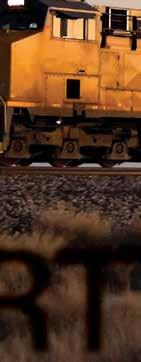

TRANSNET’S CHALLENGES
Other deterioration factors include a strategic decision to sweat existing railways over building new ones (going back to 1986). Yet Transnet carries much of the blame. Governance problems, contracting issues for parts and maintenance, and incredible levels of the are crippling the state-owned enterprise. During FY2022, thieves pilfered some 1 500km of cables across the nation – a 1 096% increase over five years, and one so stark that Transnet security personnel are now peace o icers with powers to make arrests and aid in prosecutions.
Corruption and mismanagement are also big problems, characterised by public scandals and the recent court appearances
www.samining.co.za 24 SA MINING NOVEMBER / DECEMBER 2022 MATERIALS HANDLING & LOGISTICS
© ISTOCK –
kojihirano
of former Transnet employees on charges including money laundering. Dodgy procurement contracts, irresponsible equipment investments and a lack of consistent maintenance have done the most damage. Transnet admits it has challenges with procurement.
“Over 300 locomotives are parked because of the inability to source spare parts from a key Chinese manufacturer, relating to the disputed 1064 locomotive programme,” says Transnet spokesperson Ayanda Shezi.




Nothing summarises the situation as well as comparisons with Eskom, SA’s collapsing power utility. Some are already calling Transnet the second Eskom – alarming because power generation and railways are two non-negotiable pieces of a functioning industrial society. South Africa’s future hangs in the balance.
HOPE ON THE HORIZON
Fortunately, all is not lost. Transnet forms part of a powerful and wide-ranging community that is busy putting shoulder to the wheel to reverse these issues. Foremost, since 2020 the state-owned enterprise has been under the leadership of CEO Portia Derby, who has not minced words about what needs to be done. Her leadership bravely stared down union strikes that did incredible damage to the economy,


and is now negotiating to improve parts procurement.
Transnet is also working with the World Bank “to implement 10 priority initiatives that will deliver value in the container sector in the medium to long term. Many of these initiatives have been implemented and are yielding results, but require consistent focus to improve performance on a sustainable basis”, says Shezi.

There is a spirit of collaboration, with stakeholders working together to deliver improvements. The National Rail Policy lays the groundwork for extensive public-private cooperation, including third parties operating parts of the network. Groups such as ARIA have been lobbying for these changes.


“The National Rail Policy stipulates that third-party access should happen in a way that promotes investments and creates a level playing field for all players in the industry,” says Nhlapo. “Rail is an enabler of economic growth. This private sector participation is crucial in assisting the South African economy to expand and address transformation issues – such as the inclusion of women and youth – in the freight rail industry.”


There are still hurdles, such as changing Transnet’s internal rules and processes for greater third-party access. But across the board, everyone recognises that
collaboration will save our railways.
“[We] strongly advocate public-private partnerships on key infrastructure like rail, ports and energy,” says Seccombe. “The private sector has access to capital and project management expertise that can help unlock the potential inherent in our export channels. Key to this is the involvement of the private sector in the railing of bulk commodities and the export of these commodities through the ports. There has to be an ‘open (policy) mind’ about this, and cooperation with the private sector in codesigning the most optimum model.”
In our complex world, mining needs every edge to remain competitive. Fortunately, all stakeholders are working to turn this around. Transnet’s recovery may serve as a blueprint to rescue other ailing infrastructure entities. Success is not a luxury we can a ord to delay, says Nhlapo.
“Rail reform represents an opportunity for investment, competitiveness, growth, and significant jobs. Early projections by ARIA suggest that additional parties using the rail network rail will create tens of thousands of upstream jobs, by enabling industry (like smelters, steel mills, manufacturing, and agri-processing) and mining (new coal, manganese, and iron ore mines, among others) to become internationally competitive.” ■
www.samining.co.za SA MINING NOVEMBER / DECEMBER 2022 25
In our complex world, mining needs every edge to remain competitive. Fortunately, all stakeholders are working to turn this around. – Nhlapo
“ “
Mesela Nhlapo, chief executive o icer at the African Rail Industry Association.
South Africa’s railways carry only 20% of general freight and 10% of passengers.
Transnet’s lines could soon be open to third-party operators as part of a collaborative e ort to save our railways.
TO PREVENT FLOODING,
BE PREPARED


When the rainy season arrives, mines face challenges around flooding. The answer is to regularly check your pump installations for performance and reliability
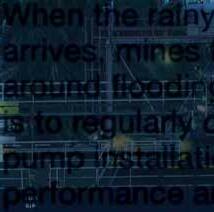
Much of the local mining industry is located in Southern Africa’s summer rainfall regions, and mines in particular face the risk of disruption if pits or sha s are not dewatered quickly enough. With the rainy season having now arrived, it is imperative that those mines facing a wet summer check that their equipment is still up to the task.


Justin Bawden, internal sales at Integrated Pump Technology, points out that now is the ideal time to conduct a full check on all pump installations. He notes that it is critical for such entities to ensure their submersible dewatering pumps are 100% operational if they want to prevent flooding and disruption.

“Weather patterns have become less predictable, with some regions experiencing drought conditions for extended periods. On the other hand, parts of the country may experience heavy rainfall consistently. The latter creates a great demand for pumps, while in the regions witnessing more arid conditions, pumps may go unused for some time,” says Bawden.







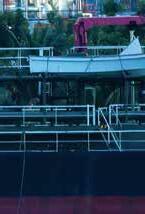

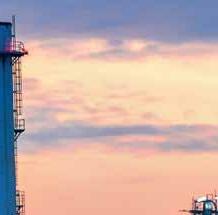
“It is thus very important to ensure
that your pumps are regularly checked for performance and reliability, particularly as they must o en be put into service at short notice.”

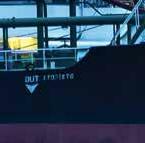
He says a key concern is that some pumps are le unused in applications where solid particles can clog up components through sedimentation. “In a muddy application, for instance, particles should not be allowed to thicken around a pump over a period of months. If a pump is restarted under these conditions, it could lead to the impeller sha snapping,” says Bawden.

For these reasons and more, he urges mines to take stock of which pumps they have available at the various dewatering “hotspots” around their sites. By re-assessing the demands that the rainy season will soon place on each of these points, he suggests, it will enable them to ensure that their pump capacities are well aligned.


“It is vital to understand the key aspects of each pumping application – from the required flow rate and vertical head to the pipeline and the nature of the material being pumped. This makes for cost-e ective choices that provide the necessary duty when heavy rains arrive,” he says. ■
WHAT ABOUT DRAINAGE?



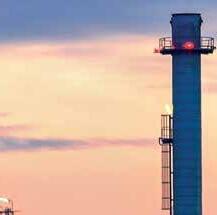
When tailings dams fail (see page 22), the consequences can be lethal, which is why it’s important that drainage systems remain operational and function e iciently.
Aside from ensuring that the dam walls are sound, it is also important to monitor drainage. If the drainage system gets blocked, it can pose major safety risks.
High-pressure jetting equipment can be used to ensure this is the case, says Sebastian Werner, MD of Werner Pumps.



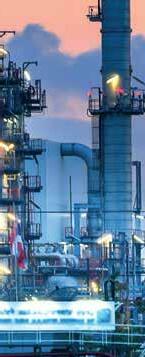

“The way most tailings dams work is that a slurry of mining waste is piped into the dam, and the solids then settle to the bottom. The water is recycled to be used in the separation process again.”
If the drainage system gets blocked, he notes, it causes flow restriction and can a ect safety factors such as the degree of saturation in the dam, and phreatic surface levels. Blockages can be caused by anything from algae buildup to mineral deposits.
“To avoid or deal with blockages, regular jet-rodding is recommended. This entails using high-pressure water jetting equipment to scour the walls of the drainage system to allow water to flow freely by unclogging the pipes. It can also assist in identifying damaged pipes,” says Werner.
www.samining.co.za 26 SA MINING NOVEMBER / DECEMBER 2022 PUMPS, PIPES & VALVES
© ISTOCK –Nostal6ie © ISTOCK –wit88
Wear Resistant, High PerformanceGlobal Quality Mining Pumps.
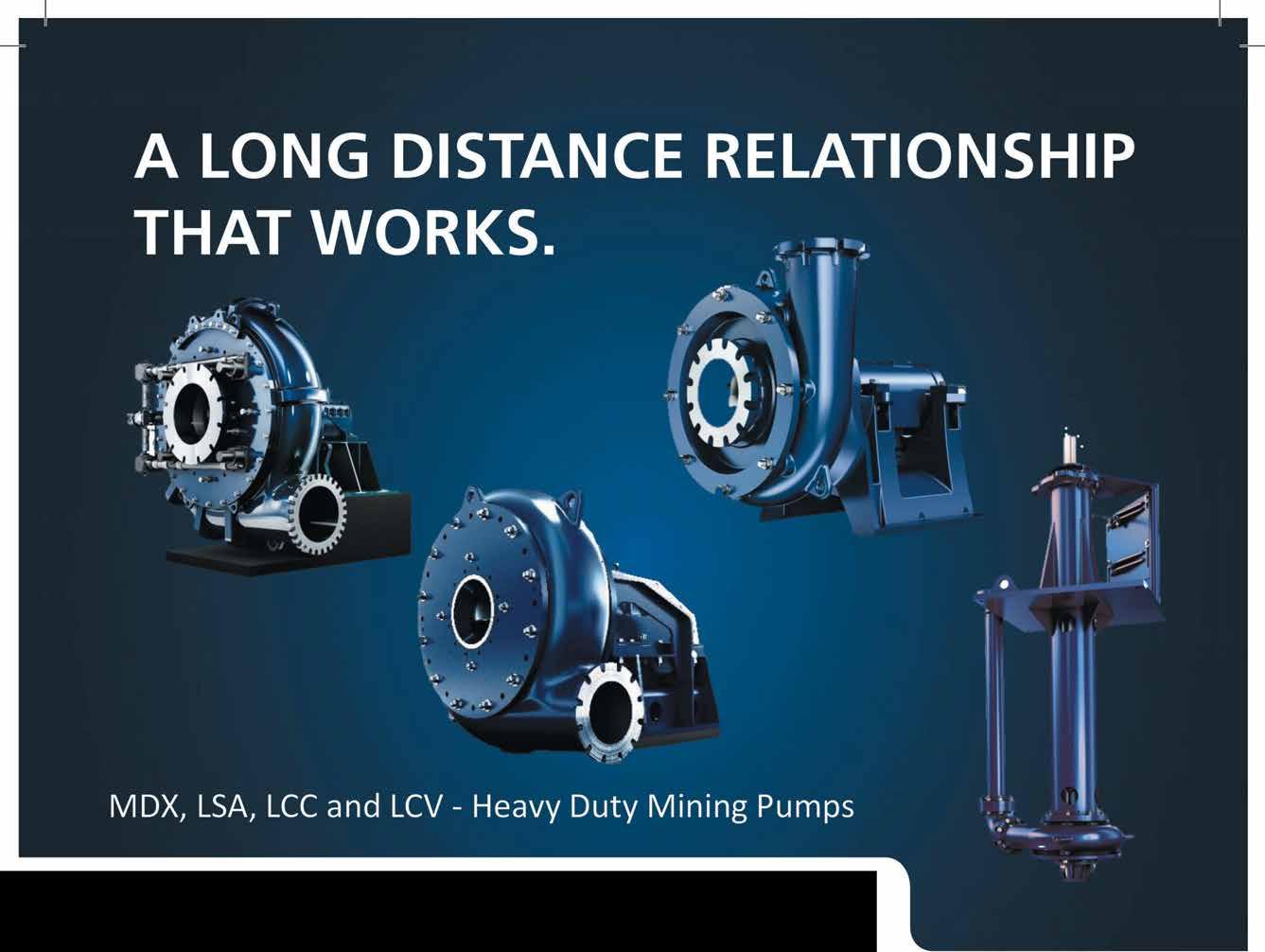




KSB South Africa is based in Johannesburg with modern manufacturing and sales facilities. With Sales & Service facilities in Southern Africa, West, Central and East Africa. KSB is represented throughout the whole country.

KSB South Africa, manufactures our globally recognised pump solutions locally to the most stringent international and local quality standards. Our innovative solutions provide for the most demanding and corrosive slurry applications with superior abrasion resistance.
At KSB South Africa, we manufacture and service your slurry systems. We work with you one on one to find the best solution for your slurry and process pumping applications. Partner with KSB to help you meet your production goals. One team - one goal. KSB Pumps and Valves (Pty) Ltd • www.ksb.com/en-za • Your Level 1
KSB MINING Kseb...
B-BBEE Partner
LTE MEDICAL SOLUTIONS










With a growing need to provide access to quality healthcare, all stakeholders need to ensure that this becomes a reality, particularly in places of occupation, and more so in the mining and industrial space that employs thousands of people,” says LTE Medical Solutions COO Andries Vorster.
“With mining and industrial companies required to provide occupational health as well as corporate wellness to both their employees and communities exposed to various risks and hazards within the workplace, LTE provides assistance to organisations in the mining and industrial space in rendering occupational healthcare
e ectively. This is particularly true for companies who don’t have a budget to set up an onsite healthcare facility.”
Established in 2012, LTE is a division of Vertice Healthcare, one of South Africa’s largest private healthcare organisations, and its core focus is on delivering innovative healthcare solutions for high burden diseases, including (among others) tuberculosis (TB) and HIV.


With a track record in more than 20 African countries, LTE o ers mobile healthcare clinics, comprehensive occupational health so ware systems, cutting-edge computeraided diagnosis (CAD) so ware, capital medical and radiology equipment, and outsourced health screening services.
As a specialist in mobile healthcare solutions, LTE strives to provide healthcare services that support organisations in the mining and industrial sectors. The mobile healthcare clinics’ o ering includes mobile occupational clinics for occupational lung disease screenings; TB prevalence studies; periodic and exit X-ray examinations; and benefit medical examinations.
These units can be deployed to even the most remote areas, operating using solar power and o line capable so ware solutions, which include a comprehensive monitoring and evaluation patient management platform (Lynx-HCF), cloudbased picture archiving and communication system (PACS) – for radiology image storage, and CAD artificial intelligence (AI).
This allows for electronic data collection during screening and consultations, eliminating human error, automating acquisition of digital X-rays, CAD AI-assisted CXR pathology classification, and clinical workflow management. Vorster says this enables X-rays taken, for example, on a site in Tanzania to be sent to South Africa for interpretation by a specialist.
www.samining.co.za 28 SA MINING NOVEMBER / DECEMBER 2022 SAFETY, HEALTH & ENVIRONMENT CORPORATE PROFILE
“ LTE is currently involved in some of the largest CAD AI-focused TB screening programmes in Africa. “ “
PROVIDES INNOVATIVE HEALTHCARE
“We can supply our clients with either specific medical equipment hardware or provide mobile clinics as turnkey solutions, which are fully self-sustainable and can be placed at specific sites to o er healthcare services for both contractors and employees. We also o er a fully outsourced model where we operate the clinics by providing the healthcare workers as well,” he says.
To ensure high-quality service delivery, LTE’s mobile clinics can be provided with qualified medical personnel, including radiographers and remotely supported radiologists. Supported through its e-health solution Lynx-HCF, this approach leverages the integration between hardware and so ware technologies, optimising workflow, making medical evaluations quicker, sharing expensive resources like specialist doctors to obtain optimal outcomes in the shortest time, and positively impacting both costs and e iciencies.



































Vorster says the company uses the latest in AI (Qure.ai) so ware, integrated within the patient management so ware Lynx-HCF, which can identify nearly 30 di erent lung pathologies including TB, lung nodules and congenital defects in under a minute. The use of CAD AI is endorsed by the World Health Organization and is used in various TB studies globally, and in South Africa.





“In essence, TB as well as other lung pathologies can be detected in less than a minute, which assists with targeted diagnosis and referral management of employees. For mines, this means that a decision on whether to send an employee back to work can be made more quickly, depending on what the CAD AI picks up.”






Currently miners are only allowed to go down a sha once they have a certificate of fitness. That can take anything up to 48 hours to obtain, leaving mine workers forced to remain idle until they receive the certificate, resulting in a loss in productivity. The CAD AI tools are especially useful when used during large-scale screenings.
“LTE is currently involved in some of the largest TB screening programmes of this nature in Africa. In fact, just here in SA, we were appointed by South Africa’s National Department of Health to supply our integrated solutions, as part of a Global Fund project for active TB case finding, to screen some 620 000 participants. We have also been appointed to supply similar solutions to other customers in both the public and private healthcare sectors.”
According to Vorster, conventional TB testing methods are expensive, and using CAD AI to screen clients reduces costs, because only those clients who display abnormalities will require further testing.

INNOVATIVE SMART SOLUTIONS
Discussing how its innovative smart solutions operate, Vorster explains that LTE’s mobile units are equipped with the latest cuttingedge radiology, medical technology, and renewable power systems. These allow for travelling to various sites – urban, semi-urban and rural – where clinical examination and testing is required. Completed screenings are uploaded in real time onto a cloud server (with o line functionality in areas with no internet access) and access to data is provided to the clients within a matter of minutes.
“This enables us to reach people in remote areas and o er them the same reports and quality of service that a person standing in front of a doctor would get,” says Vorster.
LTE’s mobile clinic service is especially useful to small mining operations, which are unable to provide the services that big mines have. They are also supportive of healthcarerelated services such as HIV screening, wellness screening and community health screening services, as part of mines’ e orts to improve healthcare outcomes in surrounding communities, through their corporate social responsibility initiatives.
Mobile health solutions.
>
www.samining.co.za SA MINING NOVEMBER / DECEMBER 2022 29
EXPANDING INNOVATION
Being an innovator in delivering new solutions for occupational health, corporate wellness and community-based screening, LTE’s research and development division pushes the boundaries of how mobile-based radiology can be rendered.
The company recently launched its XPOD, a revolutionary self-contained X-ray equipped facility that o ers a controlled environment for high-volume chest X-ray examinations in a small footprint. CAD AI-enabled, it is ideal for screening services close to operational areas, and can be used to screen for tuberculosis, silicosis, and other lung pathologies.

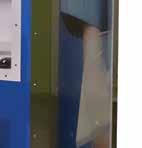

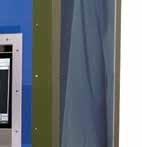

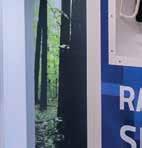
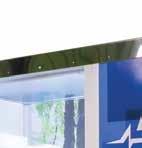
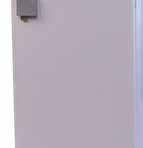

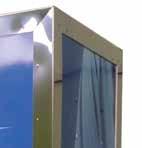

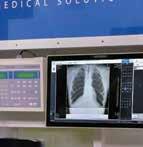
By combining locally developed so ware care plans that include, among others, mental wellness, HIV, skin cancer, vaccinations, and tele-medicine consultation services, the Lynx-HCF platform allows for a comprehensive employee management platform, ensuring better health risk assessment and greater access to clinical resources.
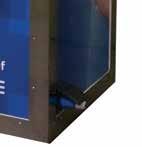
“We strive to provide locally built solutions that are made in Africa, for Africa, and allow for greater access to healthcare at lower cost,” says Vorster.



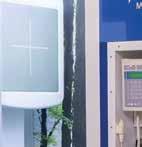

LTE provides its mobile clinics, radiology solutions and health so ware systems across Africa and as a Vertice Healthcare company conforms with ISO13485, ISO9001, ISO27001 quality standards on the products it produces and supports.
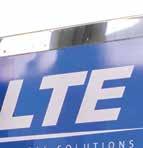
OUR IMPACT
“LTE as a company remains rooted in its principle of delivering quality healthcare to those who need it most,” says Vorster. “At the core of its values are the people, the clients and communities LTE serves and operates in.”
Its focus is around early detection, which results in timeous and relevant care to the end clients. This ensures good clinical outcomes and helps organisations
maintain healthy workforces. Supporting and reaching those who cannot easily access services avoids late presentation for healthcare, o en with complications and comorbidities, thereby reducing the burden on the health system.
“Being able to assist miners, employees and employers to live a healthier life, by supporting screening and early detection of life-threatening diseases, is something we are proud of,” says Vorster. ■
www.samining.co.za 30 SA MINING NOVEMBER / DECEMBER 2022
We strive to provide locally built solutions that are made in Africa, for Africa, and allow for greater access to healthcare at lower cost.
– Vorster CORPORATE PROFILE
“ “
SAFETY, HEALTH & ENVIRONMENT
Innovative XPOD.






























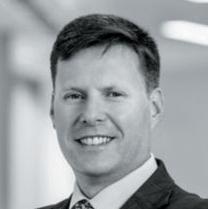



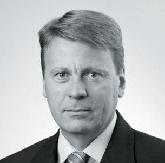
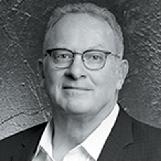


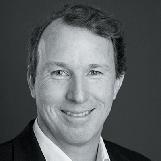
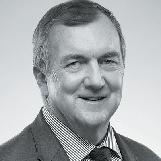

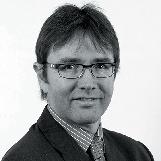

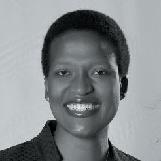
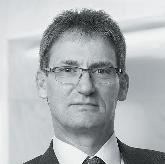

CTICC, Cape Town 6-9 February 2023 HEAR FIRST-HAND FROM AN UNPRECEDENTED LINE UP OF MINING CEOS AND GLOBAL INVESTORS TOP SPEAKERS CONFIRMED SO FAR INCLUDE: See the full list at www.miningindaba.com Duncan Wanblad Chief Executive Anglo American Group Fortune Mojapelo CEO Bushveld Minerals
Manook CEO World Coal Association
Duggal CEO Vedanta Resources Natascha Viljoen CEO Anglo American Platinum Sebastien De Montessus CEO Endeavour Mining Sinead Kaufman Chief Executive, Minerals Rio Tinto plc Tom Palmer President & CEO Newmont Corporation Clive Johnson CEO B2Gold Corporation Mark Bristow President & CEO Barrick Gold Corporation Nombasa Tsengwa CEO Exxaro Resources Roger Baxter CEO Minerals Council South Africa Neal Froneman CEO Sibanye-Stillwater Mpumi Zikalala CEO Kumba Iron Ore Chris Griffith CEO Gold Fields #MI2023 Want to increase your brand exposure? Contact Fred Noce: fred.noce@miningindaba.com REGISTER NOW TO SECURE YOUR FRONT ROW SEAT SAVE UP TO £668 WHEN REGISTERING BEFORE 16 DECEMBER
Michelle
Sunil
THE HOTTEST AFRICAN MINING PROJECTS

ANNOUNCED AT MINING INDABA
Mining continues to be a major growth sector for much of Africa, as evidenced by the announcement at the recent Mining Indaba of some of the most prestigious projects under way on the continent
 By Benjamin van der Veen
By Benjamin van der Veen
There is no doubt that Africa is home to some of the world’s most interesting and exciting mining projects. The African Mining Indaba recently discussed some of the mining developments most likely to be the kind that will play a major role in altering the future of mining in Africa. The projects are as follows.

TENDAO GOLD PROJECT – DEMOCRATIC REPUBLIC OF THE CONGO
The north-east DRC is a gold-rich region filled with multimillion-ounce operations. One of these operations is the impressive Kibali gold project. However, it is the underdeveloped Tendao project that is the latest DRC initiative to gain mainstream attention.
Okapi, a local small-cap gold miner, has acquired a 50% equity share in the mine from Amani Gold Limited. This Australian-listed mining company operates the Giro project surrounding Tendao.
The Tendao gold project is located within the bountiful Kilo-Moto greenstone belt and holds enormous potential. According to Okapi chairman Klaus Eckhof: “Randgold previously called this area ‘the world’s hottest gold exploration ground’.
“We will undertake an aggressive exploration programme over the short term, to fully test and hopefully define significant resources at the project, and move from explorer to producer,” he says.
According to Okapi, some 90% of all gold produced in the DRC comes from the KiloMoto belt. Okapi Resources is in discussions with the vendor to assess recouping any funds forwarded to them as part of the consideration for the acquisition.
GAKARA MINE – BURUNDI
With battery and electric vehicle technology quickly becoming the global standard for transportation, Africa’s rare earth metals are in hot demand. Projects like the Gakara mine are becoming star attractions, putting mineral-producing countries on the map.
The Gakara rare earth project, located in the Bujumbura province of Burundi, is one of the world’s highest-grade rare earth deposits, and the only producing rare earth mine in Africa. The mine is, in fact, considered one of the world’s richest rare earth deposits.
According to research from operator Rainbow Rare Earths, alongside MSA Group, the map’s exploration potential is up to 80 000 tonnes of mineralised material, with gradings between 47% and 67%. That’s many times higher than industry norms.
What’s more, Gakara – which has been producing for just over two years – has been relatively cheap for a high return on investment. The total capex at the site is
estimated at around US$10-million. Given the demand for rare earth metals for magnets, electric vehicle components, smartphones and more, it is a highly lucrative development, and one that highlights why investors find Africa profitable.
As of 2019, an expansion regime is coming to Gakara. Rainbow plans on boosting production by spreading operations over multiple deposits at the Gakara site. Additionally, it is looking at improving downstream separation capability to capture more mineral content. To do so, Rainbow has launched a joint venture with TechMet to develop this capability further.

SOUTH EAST ORE BODY – ZAMBIA Zambia, Africa’s second-largest metal producer, saw output rise 10.6% in the first half of the year, on the back of a stable power supply and relatively higher metal prices in recent months.

www.samining.co.za 32 SA MINING NOVEMBER / DECEMBER 2022
PROJECTS IN AFRICA
© ISTOCK –Funtay
MINE NUMBERS
■ 80 000 tonnes of mineralised material.
■ Gradings between 47% and 67%.
■ Total capex estimated at US$10-million.
One of the most recent greenfield mines to begin operations in Africa is one that reflects the growing influence of China on continental mineral extractions. In August 2018, NFC Africa, majority-owned by China Nonferrous Metal Mining (Group) Co, launched production at its South East Ore Body copper mine, Chambishi, in Zambia.

The operation was expected to produce 60 000 tonnes of copper within a couple of years, once full capacity was reached. Total copper ore reserves are estimated at 76 million tonnes, although with an average grade of 2.18%.
Overall, Chambishi South-East Mine is expected to hold a minimum lifespan of 20 years. This is good news for Zambia, Africa’s second largest copper producer. NFC Africa currently also mines at the Chambishi Main Mine and Chambishi West Mine.
RHA TUNGSTEN – ZIMBABWE

Premier African Minerals, owner of a 49% stake in the RHA Tungsten Project,
Zimbabwe, secured a US$6m investment from the Zimbabwean government to continue production in May 2019.
This was considered a crucial investment, as the mining industry is a critical economic enabler, one that in fact contributes about 20% to the country’s gross domestic product and is essential to the growth of other sectors, such as agriculture and manufacturing.
The RHA open pit was initially reopened in 2015, but following a number of problems with low-grade ore, production became fairly sporadic throughout 2016 and 2017. However, by reaching an agreement with Zimbabwe’s government and 51% partner, the National Indigenisation and Economic Development Fund, RHA was able to continue its operations.


Although tungsten is not among the significant contributors towards the US$12-billion mining milestone sought by 2023, the Zimbabwean government is committed to ensuring that over 60 mineral
deposits, including newly discovered coal and gas, contribute to economic development and drive the country to an upper middle-income economy by 2030.
In an interview on the sidelines of the recent Chamber of Mines annual conference at Victoria Falls, Mines and Mining Development Minister Winston Chitando said shareholder discussions were ongoing, and the mine was expected to start operations next year.
“There has been lack of activity but it’s coming back. Discussions are taking place with shareholders and we expect that by next year it will be up and running, as the investor is already there,” said Chitando. ■

www.samining.co.za SA MINING NOVEMBER / DECEMBER 2022 33
GAKARA
©
Regarding RHA Tungsten, shareholder discussions are ongoing, and the mine is expected to start operations next year. – Chitando –
“ “
ISTOCK
Juan-Enrique © ISTOCK –
©
t:Alfio
Horoshevych
ISTOCK –
Manciagli
TRANSVAAL GOLD MINING ESTATES – REBOOTED
 By Rodney Weidemann
By Rodney Weidemann
Plans are afoot to restart the historical underground gold mines at Transvaal Gold Mining Estates (TGME) in Mpumalanga. The ownership of TGME has been taken over by Theta Gold Mines, an Australianlisted company, with plans to develop up to 40 historical gold mines in the region.

On taking over the management of TGME, an extensive historical data digesting process and exploration strategy was implemented in order to understand the general ore body and extrapolate the reserves and resources within the TGME mining rights holdings.
According to Jacques Du Triou, COO for TGME, the mines were not originally fully mined due to technological limitations or limiting ore characteristics.

He says the Sabie-Pilgrim’s Rest Goldfield is the oldest gold mining district in the country. The metallogenic province occupies a strip of country some 50km wide and 110km long, parallel to what was the Transvaal Drakensberg escarpment, and extending from Bourke’s Luck in the north to Slaaihoek in the south.

In September 1873, Pilgrim’s Rest was o icially proclaimed a gold field, and in 1895, several small mining companies amalgamated to form Transvaal Gold Mining Estates. Gold was mined on an organised basis by TGME until 1971, and latterly from 1986 to 2015.
“TGME completed a feasibility study in July 2022, which indicated a highly robust project with a life of mine of 12.9 years, ore mined of 6.21Mt at 5.81g/t with an AISC of US$846/oz over the life of mine (LoM) of the project,” he says.

Explaining why these mines were never mined out, Du Triou says according to historical data, it’s clear that in the early days of TGME, even at high grades, the mines always remained marginal. This was mainly due to production issues, as well as having to battle pests, floods, fires and epidemics. Furthermore, they faced transport and logistics issues, especially in the vicinity of Pilgrim’s Rest and the mountains surrounding the goldfields there.
“It must be remembered that the ox wagon was the pioneer transport in this
district, as in other parts of South Africa, and for many years all material and equipment were brought in by this means. During the first 35 years of mining in the district, transport was thus the greatest drawback in the development of the mines.”

HIGHLY FEASIBLE PROJECTS
“Additionally, due to the scattered nature of the company’s mines back in the day, road construction and maintenance were always major undertakings. Some of the roads serving the isolated mines high in the mountains were masterpieces of pioneering construction with pick and shovel, the only tools available at the time,” he adds.
Due to the challenges listed above contributing to very high working costs and a fairly primitive mining methodology employed by TGME back in the day, continues Du Triou, this necessitated a cuto grade of above 20g/t.
“At the current gold price, combined with the application of modern technology, many previously unpayable mining blocks can be brought into production at a cut-o grade of
www.samining.co.za 34 SA MINING NOVEMBER / DECEMBER 2022 UNDERGROUND MINING
An Australian-based miner has big plans to remine the historic SabiePilgrim’s Rest Goldfield, creating jobs, uplifting local communities and rehabilitating the natural environment – all while making a tidy profit
© ISTOCK –Nordroden
FAST FACTS
■ The peak capital funding required for the project is R1.197-billion, or US$77-million over a life of mine of 12.9 years, with an internal rate of return of 57.6% and a real-term best-estimated value of R3.377bn or US$218.8m at a real discounted rate of 10%, gold price of US$1642/oz, and average exchange rate of 15.50 ZAR/US$.
■ The estimated nameplate production will be 540 000 tonnes per year, at an average recovery grade of 5.18g/t, with an average planned gold recovery of 87%.


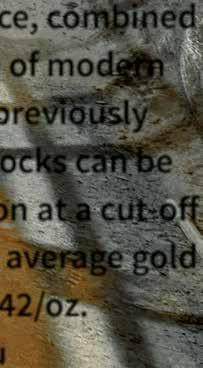
2.46g/t, at an average gold price of US$ 1 642/oz.
“Thanks to the high grading of the past, most mines owned by TGME today present opportunities to restart close to the surface at pre-developed mining faces, which are highly feasible at today’s gold price, as we will be using the appropriate technology, and are not bound by the same constraints that faced historic operators.”
He says some of the previous failed attempts to revive these goldfields were due to an approach of preconceived thinking, preferences and existing infrastructure applied to the ore body. Instead, he says that an overriding principle of Theta Gold is that “the ore body dictates”.
“When the ore body dictates, it is assessed in-situ, and then appropriate, cost-e ective means to extract gold from it are sought so that the maximum possible amount can be extracted. A major driver is a determined approach to finding an operating model where, for each ore body, the mining methods fit.”
The current TGME underground project
consists of four mines, out of 43 historical mines forming part of the current mining rights portfolio. These four are Beta complex, CDM, Frankfort and Rietfontein.
“Beta Mine will be the first mine to come into production, and stoping will start in month 26, 11 months a er the development commenced. The Rietfontein mine will commence in month 37, followed by Frankfort and CDM in month 115 of the start of the project,” says Du Triou.

EXECUTION AND INFRASTRUCTURE
Theta’s planned project execution date is scheduled for Q2 of 2023, depending on environmental and water-use licence approvals. Project construction includes a new gold plant, surface mine footprint infrastructure, tailings facilities preparations, integrated water management systems, and road and water crossing upgrades.
Mine development is planned for six months a er the project execution date. Once underground development commences, all on-reef development will be stockpiled for 10 months before the plant

is commissioned. First gold production is therefore expected in Q2 2024.

“The plan is to use the existing mining infrastructure, with the addition of new accesses, underground development, and pre-development of the mining grids to access the planned mining areas at Beta, Frankfort and CDM,” he says.
“When mining grid development has advanced su iciently, early stoping can commence. The aim is to open up su icient ground to produce the planned stoping tonnes. At Rietfontein, the existing mine adits and underground development will be utilised with the addition of new development ends, a new decline and the extension of an existing decline.”
Du Triou notes further that a new processing plant will be constructed 2.7km from the town of Pilgrim’s Rest in Mpumalanga. Construction of the processing plant will also commence in Q2 2023, depending on the environmental and water use licence approvals.
“The processing plant has been developed in three phases, allowing for
www.samining.co.za SA MINING NOVEMBER / DECEMBER 2022 35
>
At the current gold price, combined with the application of modern technology, many previously unpayable mining blocks can be brought into production at a cut-o grade of 2.46g/t, at an average gold price of US$ 1642/oz.
– Du Triou
“ “
Jacques du Triou.
various processing scenarios aligned with the mining development programme. The design of each phase is based on a standalone processing facility aligned with the mining plan of the ore body.”
He says phase 1 will consist of a carbonin-leach plant treating free milling ore. Phase 2 will encompass a gold concentrator plant, treating sulphide ore. Finally, phase 3 includes a 45ktpm leach-ox process plant, designed to include crushing, milling and carbon/sulphide flotation.

“Although there is some shared infrastructure and processing equipment between the phases, the phase 1 plant will be constructed first to treat CDM, Rietfontein and Beta ore, with phase 3 being constructed at a later stage, before mining of Frankfort ore commences.”
LOCAL COMMUNITIES AND JOB CREATION
A vitally important part of the project is for it to ensure the permanent employment of local people, with more than 250 expected to be hired initially. The expansion of the project during phase 2 is further expected to ensure permanent employment for more than 1 000 people.
In order to limit the negative impact of the mining operation on the area, Du Triou says the mine has a strong focus on the recruitment and development of previously disadvantaged and unemployed members of the affected communities.
“TGME will seek first to recruit from its local communities. If the requisite skills are not identified, we will then seek to recruit at the provincial or national levels. In a scenario where local skills are not present, interventions to create a local talent pool will be undertaken. Ultimately, TGME aims to recruit 70% of unskilled labour locally, and hopes to recruit 80-85% of employees from within Mpumalanga province,” he adds.
“The TGME local economic development framework guides the company in terms of its strategic objectives for creating a thriving, sustainable, and long-lasting economy beyond the life of mine. This framework comprises the following five pillars, which TGME sees as the ‘building blocks’ of local economic development in its area.”
■ Productive infrastructure which supports economic growth.
■ Empowering households, through horticulture training and infrastructure, to ensure food security and enter micro-
commercial agriculture through selling surplus produce in local markets.
■ Upskilling local businesses with powerful business tools to increase profit and prepare for expansion. Stimulating market access for sales of local goods and services.
■ Broad-based enterprise development programme for top performing businesses.
■ Tourism economy development for tourism-focused local businesses.
“In line with this framework, TGME has identified the following four local economic development projects, which will be rolled out in phases: agriculture skills and livelihood development; small business development, market access, and broad-based enterprise development; tourism economy development; and productive infrastructure.”
ESG COMMITMENTS
During the design phase of the underground gold mine operations and metallurgical plant, the company looked at initiatives that would help reduce the carbon emissions and create fewer greenhouse gases (GHG). The current amount of CO2-e per gold production has been calculated at 0.25 tCO2e/oz, says Du Triou.
www.samining.co.za 36 SA MINING NOVEMBER / DECEMBER 2022
MINING
UNDERGROUND
The current TGME underground project consists of four mines, out of 43 historical mines forming part of the current mining rights portfolio – namely Beta complex, CDM, Frankfort and Rietfontein – Du Triou © ISTOCK –davit85
“ “
“To ensure the sustainable management of natural resources the company conducted a biodiversity verification and pre-feasibility assessment to identify environmental bu er zones.
“These assessments then informed the engineering designs, to ensure that the surface infrastructure layout is limited to previously disturbed areas. A water and waste management system was also designed for the operations, which will ensure that all a ected water is contained, recycled and reused in the system.”
Moreover, an ecological compensation programme, to provide funding to contribute to the long-term security and biodiversity of the ecosystem, will focus on rehabilitating the ecological and hydrological functioning of the upper portions of the Blyde River catchment area.
“This ecological compensation programme consists of several approaches. These include invasive alien tree control and re-vegetation; fire belt implementation; and control – through regular and repeated reconnaissance and control measures – of all invasive alien trees within the riparian zone of the Blyde River. They also include implementation of erosion and sediment
control operations on all areas cleared of alien invasive plant species, and the revegetation of these areas with indigenous plant species to the level of a cover of 15% within 10 years, with the objective of removing unnatural levels of sediment input into the Blyde River system.”
The organic growth strategy of the company is to produce over 160 000oz of green gold per year, says Du Triou.
The current phase 1 will bring four mines into production, and phase 2 of the plan will expand production to six mines within the next five years. During this period, the strategy will also be to increase the current 6.1 million ounce mineral resources to over 10 million ounces.
“The above will be achieved via an extensive exploratory drilling programme spanning the current mining rights portfolio. This increase in mineral resources will, naturally, increase the current life of mine exponentially,” he says.


“As the project is still in its relatively early stages, the implementation of the TGME underground project requires several environmental approvals, and needs to ensure the alignment of existing approvals with current environmental laws, in order
SKILLS DEVELOPMENT AND TRANSFER
The company is committed to upli ing local communities through providing significant employment and skills development. Some of the human resource development programmes planned include:
■ Adult education and training, aimed at providing employees and community members with the opportunity to become functionally literate and numerate.
■ Core business skills programme, including required competencies to successfully execute specific employment responsibilities. This will also include all requirements according to legislative competencies and relevant mining regulations, as well as businessspecific technical needs.
■ Learnership and internship programmes that lead to a qualification registered on the National Qualification Framework (NQF), as well as on-the-job experience.
■ Bursary programmes.
■ Portable skills programmes for employees and local community members.
■ Youth development programmes.
to undertake any additional activities required for the project. The good news for us, for the people of the region, and the SA economy as a whole, is that the current approval processes are progressing well,” says Du Triou. ■
www.samining.co.za SA MINING NOVEMBER / DECEMBER 2022 37
ISTOCK –Oat_Phawat
©
© ISTOCK –abadonian
THE ONGOING EVOLUTION OF WORKER COMPENSATION AND BENEFITS

In 1894, three South African mining companies demonstrated incredible foresight for an era in which workers generally received short shri in respect of their needs. They created a mutual assurance company – Rand Mutual Assurance (RMA) – aimed at insuring and administering workmen’s compensation benefits.
This was done in order to ensure proper care for miners injured on duty, and to take care of their families in case of a fatality.
This was so far ahead of its time, the SA government only began considering implementing workmen’s compensation for other industries in the 1920s, and the o icial implementation only began some 20 years a er that.
Today, RMA administers compensation for both the mining and the metals sectors, and does so with a R25-billion balance sheet, and over 1.1 million workers covered.

 By Bilal Adam CEO of RMA Life
By Bilal Adam CEO of RMA Life
PREVENTION IS BETTER THAN CURE
Of course, as with any industry, RMA has had to evolve, as the industries it oversees have also changed. A good example here is RMA’s newest division, which focuses on prevention and rehabilitation.
Essentially, this recognises the fact that it’s better to prevent an injury occurring than merely to compensate someone a er the fact. Moreover, if someone is injured, RMA seeks to provide some form of rehabilitation that will ensure a better quality of life for them.
In a situation where the injury prevents them from returning to their old job, rehabilitation may include reskilling them to remain productive, continue earning for their family, and regain lost dignity.
Remember that any injury that occurs has a significant personal impact on the victim and their family, and a negative e ect on the employer. Serious injuries create cost impacts on a business, psychological ones on the other employees, and even potential reputational ones in the market.
Of course, prevention today is made easier, thanks to the rise of digital technologies and the increasing accumulation of data by businesses. By leveraging modern artificial intelligence and data analytics solutions, RMA is able to take the vast quantities of big data garnered over the years and use this to gain greater understanding of the types of injuries that occur, how these happen, and what the biggest causes of injuries in the industry are.
Understanding this allows for training to be undertaken and e orts to be made to reduce the leading types of injuries.
It is also necessary to account for the employee’s mental wellbeing – financial stress, so common today, is a leading cause of workers’ minds becoming preoccupied with personal di iculties, instead of being fully on the job.
Thus RMA has instituted a major focus on the provision of financial wellness sessions. These o er workers help in understanding how to save and be more savvy with their money, assistance in consolidating debt, and even with the consolidation of their insurance policies.
REHABILITATION AND RESKILLING
Rehabilitation, which may include reskilling, is also a major focus, and aims to ensure the injured party is able to remain a productive, meaningful part of society.
At RMA’s rehabilitation facility, the injured are helped to develop an alternative skill to allow them to continue earning, despite their injury. Remember that many miners are the main breadwinners in the family, so enabling them to continue earning a salary is critical for both their family’s welfare, and for their own dignity.
In some cases these new skills are vastly di erent – they could be anything from weaving baskets to small-scale farming – but they allow them to return to their community as a productive member of society.
These rehabilitation e orts are built on three key pillars: Clinical, which is the aspect around dealing with the injured party; Vocational, which is related to their return to work or the reskilling they require; and Social, which focuses on their reintegration into their family and community, and helping them to regain their dignity.
Another plan in the works is to leverage RMA’s Life business to provide greater help to these employees. Beyond keeping workers safe and well looked a er in the place of employment, they should also be assisted in their life outside of the work environment. In essence, the idea is to o er an end-to-end solution to cover them across all facets of their lives.
Ultimately the goal is to match or exceed the levels of empathy demonstrated to workers all those years ago, when the organisation was first formed.
Thanks to an ongoing evolution and focus on the welfare of its members, RMA will remain positioned to positively impact the lives of the employees, families, communities and the employers that it serves, for many decades to come.
■
www.samining.co.za 38 SA MINING NOVEMBER / DECEMBER 2022
The views expressed are the author’s own and do not necessarily reflect SA Mining’s editorial policy.
© ISTOCK –Mirpan Amd
EQUIPMENT COVER STORY COLUMN COMPENSATION & REHABILITATION
South Africa has a proud history of providing compensation to workers injured on duty, beginning in the late 19th century. Today, in the 21st century, such benefits are undergoing a continuous evolution


WHAT MINING, MENTAL HEALTH AND MARATHONS HAVE IN COMMON
If physical fitness encompasses the body’s ability to function optimally and without injury across a range of tasks and scenarios, psychological fitness refers to how mentally and emotionally proficient we are, particularly as it relates to our work.
As an organisational development consultant who specialises in the mining sector, if I were to categorise a miner as being “psychologically fit”, this would mean that they had not only the ability, but also the energy, motivation and general chutzpah, to perform their job e ectively.
Sadly, within a mining context, mental health is seldom prioritised. This is particularly concerning, given the dangerous environment, coupled with challenging working conditions and the pressurised, target-chasing nature of the work.
One research paper that studied the state of mental health in miners found that the environment lent itself to mental health conditions, triggering issues such as anxiety, job stress, depression, sleep disorders, mental fatigue and more. The research results could be categorised according to four key themes: psychological problems and personal factors; psychosocial problems and healthrelated factors; well-being and physical problems; and organisational factors – with the first theme being the most prominent.

 By Lani van der Merwe Organisational Development Consultant at OIM Consulting
By Lani van der Merwe Organisational Development Consultant at OIM Consulting

The reality is that psychological unfitness is all too prevalent in the mining sector, and there is a high level of burnout that permeates the workforce. There is a very real danger attached to this. Psychological unfitness can lead to mistakes that can cause injury or even loss of life.
Addressing the challenges created by psychological unfitness requires a programme focused on giving front-line leaders and miners tools that will help them actively tackle stress and gain more meaning from their work.
Just as in the case of someone who is physically unfit – which means they’ll take time and e ort to recover a er physical strain – so psychological unfitness limits our ability to perform to the best of our ability, day in and day out. These skills need to be applied every day to achieve fitness.
The psychological fitness plan should also encompass a holistic approach, one that includes exercising, eating well and not abusing substances. The physical and mental are always interlinked. Ultimately, it’s about teaching people to understand the importance of psychological fitness, and to demonstrate that achieving – and sustaining – such fitness is a marathon, not a sprint, and only constant e ort will ensure success. ■
The views expressed are the author’s own and do not necessarily reflect SA Mining’s editorial policy.
EQUIPMENT COVER STORY COLUMN SAFETY EQUIPMENT
Given the dangerous environment, challenging working conditions and pressurised nature of mining work, the importance of an individual’s psychological fitness should not be underestimated

















© istockm_a_n ADVERTISING: Ilonka Moolman 011 280 3120 moolmani@samining.co.za Tshepo Monyamane +27 62 239 3538 Tshepom@samining.co.za www.linkedin.com/company/samining/ businessmediamags.co.za/mining/sa-mining/subscribe/ www.facebook.com/businessmediaMAGS/company/samining/ twitter.com/BMMagazines To visit our website. www.instagram.com/business_media_mags/ WHY ADVERTISE ONLINE ● ADDED VALUE/EXPOSURE TO YOUR BUSINESS VIA ONLINE CONTENT. ● Help build/strengthen your company’s brand. ● DRIVE TRAFFIC TO YOUR COMPANY’S WEBSITE. ● Expand your reach with various packaged o erings suited to your company’s needs, such as bundling your advertising with news/corporate pro les and/or a video online. SA Mining, South Africa’s oldest mining magazine, has been providing insight into the local, Southern African and African mining space for 125 years. Banner 728 x 90 px Island / Medium Rectangle 300 x 250 px YOUR ADS HERE COMBINE DIGITAL WITH PRINT FOR GREAT SAVINGS! MIN NG READ WHAT REALLY GOES DOWN IN SADC SA www.samining.co.za We are now giving our readers and clients an opportunity to take their news and advertising online in real time through www.samining.co.za HERESCAN
EIGHT YEARS’ LOST TIME INJURY-FREE MILESTONE ACHIEVED

Thiess and AECI Australia have celebrated eight years’ lost time injury (LTI) free. This milestone was achieved while safely delivering 500 000 tonnes of bulk explosives down the hole and firing over 1.5 million detonators.
Duncan Etwell, AECI Mining Explosives MD for Australia, says a key element of the success can be attributed to the proactive relationship that has developed between Thiess and AECI Australia over eight years of collaboration.

“We are extremely proud of this eight-year LTI milestone; it is a record seldom achieved within the explosives industry. Our partnership with Thiess is one based on transparency between supplier and end user. This enables continuous improvements to our product quality, but more importantly, to the safe application of our products in the field,” says Etwell.
“Together we have implemented many innovative initiatives that have assisted us in overcoming challenges along the way. We value the openness and input from both sides of our joint operations, which enables this partnership to continue along its positive path of mutual growth and sustainability.”
AECI’s relationship with Thiess began in 2009 in Indonesia, when AECI Indonesia secured its first blasting services contract with Thiess Contractors Indonesia. This led to a joint operation partnership being established between AECI Australia (Pty) Ltd and Thiess (Pty) Ltd in Australia in 2014.

AECI Australia is committed to the supply of safe and e ective products with the objective of ensuring the safe and e icient application of its products through continuous customer support and technical training.

MAKING MINES WORK






















www.associatedequipment.co.za Duncan: +27 (0) 83 626 5588 Anton: +27 (0) 82 923 5397 Jaap: +27 (0) 82 892 1327 Loraine: +27 (0) 76 021 4344 Office: +27 (0) 11 801 4911 vendels@mweb co.za associatedloraine@xnet.co.za ves@xnet.co.za Plot 92 Indaba Lane-off Beyers Naude, Rietfontein, Roodepoort, South Africa We Are Buyers For Your Good Running Redundant Equipment GPS COORDINATES: S26°3”56.343 – E37°52”37.453 • www.vendelequipmentsales.co.za 2x NEW 2022 CASE 851FX 4x4 TLB’s 1x NEW 2022 CASE 851FX 4x4 TLB with 4 in 1 Bucket 2x NEW 2021 CAT 323D3 Excavators 2x NEW 2021 CAT 320D3 Excavators 1x 2018 Hitachi Zaxis 330LC Excavator 1x 2013 CAT 336D LME Excavator 1x 2018 Caterpillar 966L Front End LoaderRefurbished 1x 2007 CAT 814F Wheel Dozer-Refurbished 1x 2017 JCB 540-140 Telehandler 1x 2016 JCB 540-170 Telehandler 1x 2015 JCB 535-125 Telahandler 1x 2006 CAT TH560B Telehandler 1x BOMAG BC671 Landfill Compactor 34 TonRefurbished With New Pads 1x BOMAG BC670 Landfill Compactor 4x NEW 2022 CASE 770FX 4x4 TLB 1x NEW 2022 CASE 770FX 4x4 TLB with 4 in 1 Bucket 1x 2011 CASE 580T 4x4 TLB 2x 2011 CAT 140K Motor Grader with RipperRefurbished 1x 2009 CAT 140K Motor Grader with RipperRefurbished 1x 2016 CAT AP600F Asphalt Paver (Only 854 Hours) 1x 2009 CAT AP600 Asphalt Paver 1x BITELLI BB670 Asphalt Paver-(8m Screed) 1x 1994 ETNYRE K Chip Spreader 4x4 With Variable Width-Refurbished 3x ETNYRE K Chip Spreader 4x2 1x 2012 Komatsu D275AX-5EO DozerRefurbished 1x 1996 CAT D10R Dozer-Refurbished 1x 2019 Caterpillar 426F2 4x4 TLB 1x 2016 Caterpillar 428F2 4x4 TLB 1x 1997 CAT 428C 4x2 TLB 1x CAT 16G Motor Grader with Ripper-Refurbished 2x CAT 140G Motor Grader with RipperRefurbished 50H + 72V Series 1x 2012 CAT 740 A.D.T 6x6 1x 2010 CAT 740 A.D.T 6x6 1x 2004 Terex TA30 A.D.T 6x6-Refurbished 1x 2009 CAT PF300C 7 Wheel P.T.R 1x 2015 BOMAG BW24R P.T.R 1x 2008 HAMM GRW15 P.T.R 2x 2008 Broce RCT350 Road Sweeper 1x 2019 JCB 3DX SUPER 4x4 TLB 1x 2016 JCB 3CX ECO 4x4 TLB with 4 in 1 Bucket, Extendable Boom 1x 2007 CAT 140H Motor Grader with Ripper-Refurbished 2x 2006 CAT 140H Motor Grader with Ripper-Refurbished 1x 2017 UD Quester CWE 330 10m3 Tipper Truck (106 380KM) 1x 2017 UD Quester CWE 330 10m3 Tipper Truck (106 700KM) 1x2014 HAMM GRW18 P.T.R 1x2009 HAMM GRW18 P.T.R 1x2009 HAMM GRW24 P.T.R 1x 2011 Bomag BW212-PD40 SD Roller 1x 2008 HAMM HD120 DDV Roller 1x 2008 HAMM HD14 DDV Roller 2x 2014 Wacker Neuson RD12 Rollers







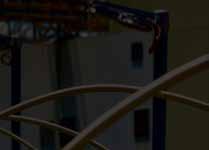









BRELKO CONVEYOR PRODUCTS ® APPLICATIONS • Nip Guards improve worker safety around head, tail, and drive pulleys and prevents worker exposure to conveyor pulley nip points and pinch point hazards. FEATURES • Easy installa�on. • Low maintenance. • Simple design. • Operates in all condi�ons. • Manufactured according to SABS, CEMA, Australian and PROK moun�ng standards. • Unique adjustable guard maintains a constant gap between the conveyor belt and guard, even when the conveyor belt is tensioned. • Robust construc�on for longer life. • Can be installed on bidirec�onal conveyor belts. Tel : +27 11 013 4000 Fax : +27 11 013 4150 E-Mail : sales@brelko.com Website : www.brelko.com BRELKO NIP GUARD SAFETY DEVICE PATENTED NEW PRODUCT Air Liquide .......................................................................................... 42 Auto X 39 BLC Plant Company IBC Bosch Diesel Service IFC Brelko Conveyor Products 44 Cenotech 40 E&T Minerals 13 Invincible Valves......................................................................... OBC; 7 Keller .................................................................................................... 3 KSB Pumps & Valves 27 Komatsu Mining 5 NSDV 12 Tomra Sorting Mining 20 UMS 21 Vendel Equipment Sales 43 INDEX TO ADVERTISERS © ISTOCK –poco_bw TO ADVERTISE IN MIN NG READ WHAT REALLY GOES DOWN IN SADC www.samining.co.za SA CONTACT ADVERTISING Ilonka Moolman 011 280 3120 moolmani@samining.co.za Tshepo Monyamane 011 280 3110 tshepom@samining.co.za



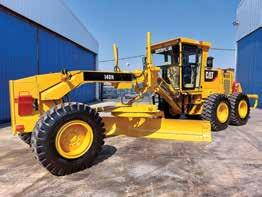
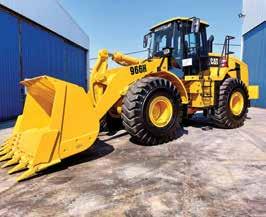
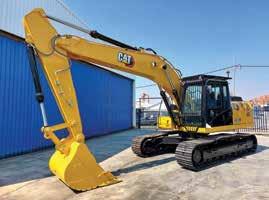
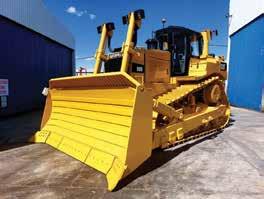
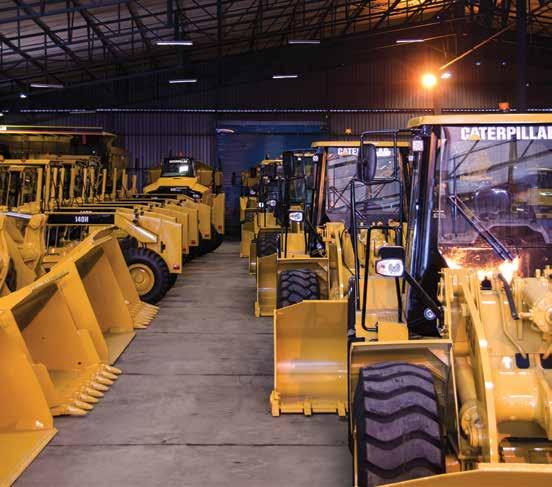
MAHINDRA MAYHEM BRAND NEW MAHINDRA VX90 4X4 TLB’S with AIRCON PARTS RENTAL PLANT AFRICA’S LEADING EARTHMOVING EQUIPMENT & PARTS DEALER www.blcplant.com +27 11 555 2000 info@blcplant.com Service exchange units available. 6 MONTHS WARRANTEE on refurbished components. View all our available stock on our website www.blcplant.com WHEEL LOADER CAT 950H; 966H/L; 962H; 980H; 992G/K EXCAVATOR CAT 320D; 323D; 329D; 336D; 345D; 349D; 374D/F; 390D/F MOTOR GRADER CAT 140H; 140K; 14H DOZER CAT D6R/T; D7R; D8R; D9T; D10T; D11T OVER 600 MACHINES IN STOCK MERC BENZ AXOR 3335 TIPPER TRUCKS (2008) X 3


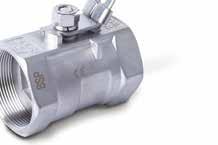














































































































 By Rodney Weidemann
By Rodney Weidemann








































 By Rodney Weidemann
By Rodney Weidemann













































































































































































 By Benjamin van der Veen
By Benjamin van der Veen







 By Rodney Weidemann
By Rodney Weidemann














 By Bilal Adam CEO of RMA Life
By Bilal Adam CEO of RMA Life

 By Lani van der Merwe Organisational Development Consultant at OIM Consulting
By Lani van der Merwe Organisational Development Consultant at OIM Consulting



































































